After a successful Mumbai to Goa coastal road trip, this time around we explored the roads of Mahabaleshwar, Panchgani & Kaas Plateau. And this five days of road trip was full of excitement and fun, some new experiences and learnings. We bring to you a detailed journey about our road trip with every possible relevant information.
Keep reading and roam the roads with us!!
Road trips to this part of the mountainous ranges of Sahyadris in the rainy season are mostly avoided by many as this region gets very heavy rainfall. Who can forget the floods of Mahad taluka in Raigad district in July 2021 caused due to incessant rain for 3 days? Probably the people who suffered huge losses won’t.
Mahabaleshwar is one of the top points of the Sahyadri ranges and extremely heavy rainfall here causes havoc in the lower areas which becomes prone to landslides and flooding.
Before embarking on this journey, I was aware about this and we made sure to check the current weather conditions.
| Date of travel | 07th September to 11th September 2022 |
| No. of days | 5 |
| Total KMS | 756 |
| Vehicle | Motorcycle (Royal Enfield Standard 350) |
| Petrol cost | Rs 2180 |
DAY 1 – FROM HIGHWAY TO THE HILLS
Mumbai to Mahabaleshwar (via Poladpur/Ambenali Ghat)
Having mounted our luggage on the motorcycle, we left home at 6 am. It was raining but after an hour into the ride, the sky cleared itself from the clouds and the sun peeped as we crossed the Vashi creek. The traffic kept increasing on the other side of the lane as it was a normal week day and people flocked to go to their offices. And here we were happy to go far from the city. Negotiating the slow moving trucks we entered NH 66 (Mumbai Goa Highway).
ROAD UPDATE –
The highway is pretty good till Pen. The stretch of road from Nagothane-Roha-Kolad is not in a good condition. The work is in progress with lane diversions in place. But the thrill of riding on the hills keeps us going on this bumpy ride.We recommend eating lunch at Mast Malvani – a konkani restaurant in Mahad on the highway. They have their own farm and vegetables are freshly served. To stay light throughout the ride we simply ordered dal khichdi and ate bhakri with green chili thecha (a maharashtrian recipe made with green chillies and garlic with crushed roasted peanuts).
Enroute, we visited Gandharpale Caves (also popularly known as Pandavleni) located on the outskirts of the Mumbai Goa Highway. These groups of 30 Buddhist caves located on a hill to your left easily catch your attention.There are stone steps to reach the top. The site gave a beautiful panoramic view of Gandhari river and the hillock was enhanced by several water cascades.
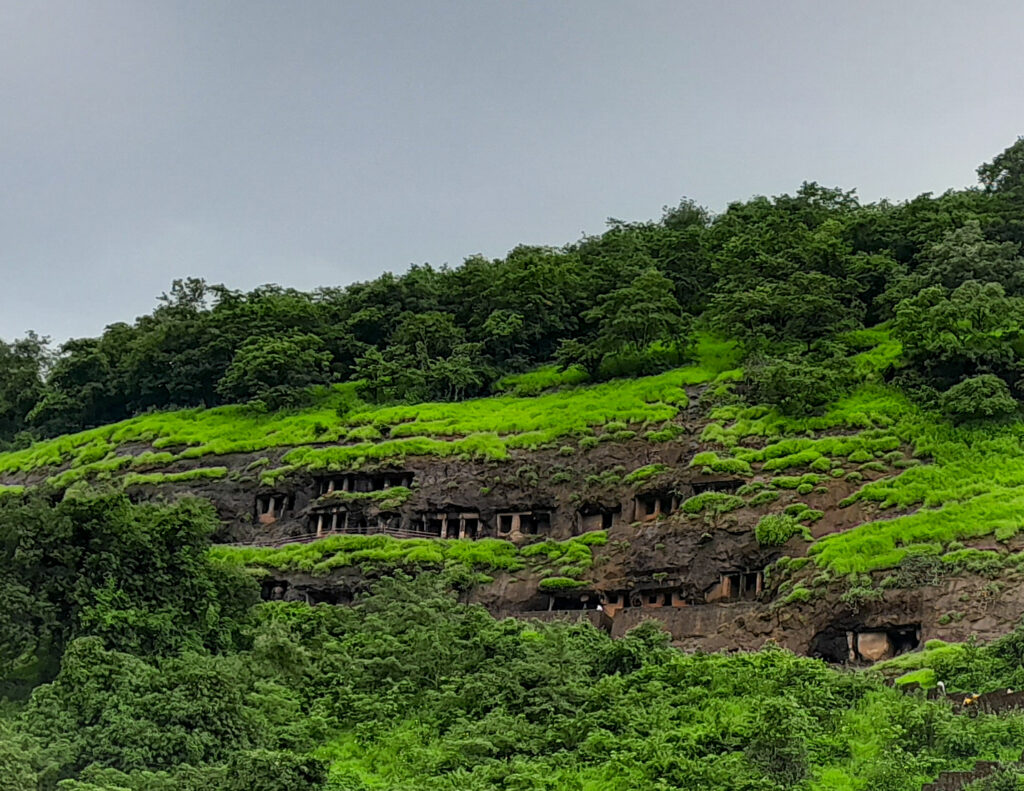
We reached Poladpur around 3:00 pm. It is a busy market area. You have to leave the highway here and take left. This road takes directly to Mahabaleshwar which is a ride of 40 kilometers on the Ambenali Ghat. This is the longest ghat in Maharashtra cutting across the Sahyadri ranges with numerous hairpin bends and steep gradients.
ROAD UPDATE –
The ghat road is smooth and well laid out at most places except for very few small stretches where there are undulations. We enjoyed the ride with panoramic views of the valley and stopped by at numerous cascading waterfalls. There are few stalls on this route where you can sip in hot tea with a view of clouds rolling into valleys. The fog enveloped the ghat as we kept gaining height.
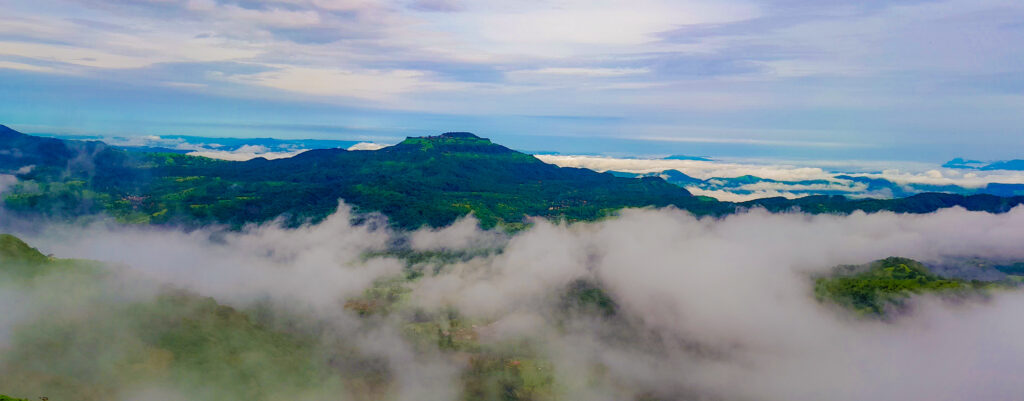
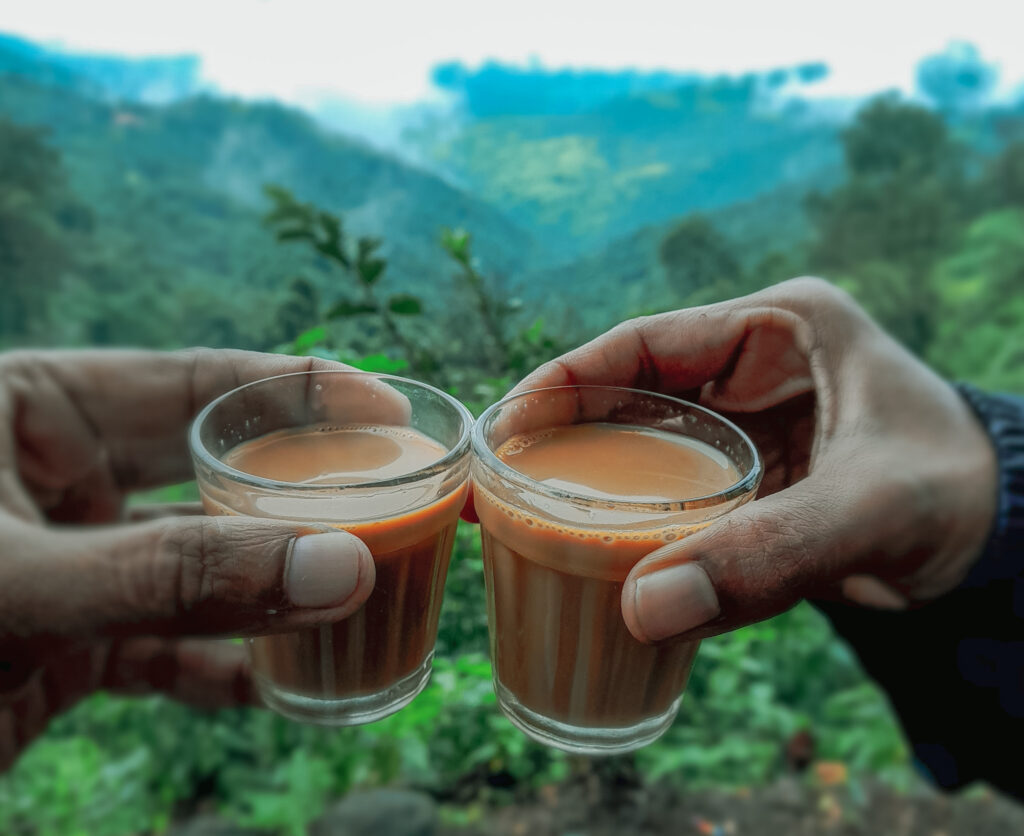
A road sign indicated Mahabaleshwar 5 kilometers away. No sooner we were about to reach, it started raining heavily. The hills welcomed us with showers of pouring rain and fully drenched we rushed into our hotel room greeted by a not so welcoming smile from our host.
The room had a balcony with a good view of hills. I had already started visualizing colorful wildflowers carpeting the entire Kaas Plateau. I wanted this day to end soon. But did we get enough rain this year for the flowers to bloom? Will we be able to see the different flowering plants? Only time could tell tomorrow.
DAY 2 – KAAS PATHAR – MAHARASHTRA’S PLATEAU OF FLOWERS
Mahabaleshwar to Kaas Plateau (via Mahabaleshwar Kaas Road) &
Kaas Plateau to Mahabaleshwar (via Kaas Bamnoli Tapola Road)
We took two different routes to and fro and this made the day an exciting one. Kaas plateau can be approached by two routes from Mahabaleshwar. One is via Satara which is the longest one. Another is via Mahabaleshwar-Kaas Road which is just 37 kilometers and is a secluded route.
The sky was overcast. We were the only ones riding on this single village road leading to Kaas and met only a couple of locals passing by. The view of the Koyna valley and surrounding hills was mesmerizing. You would love to take many halts on this unexplored route. There are many trails and points where you can spend some time.
One such halt we made was at Varsoli Koli. The name doesn’t matter as there is no signboard anywhere. There are numerous windmills on this route. We could touch the poles of a windmill, it is so close. They look like some massive metal flowers blowing breezes through their petals. As I rode, my eyes were drawn upward and around marveling at these spinning wheels quietly making electricity.
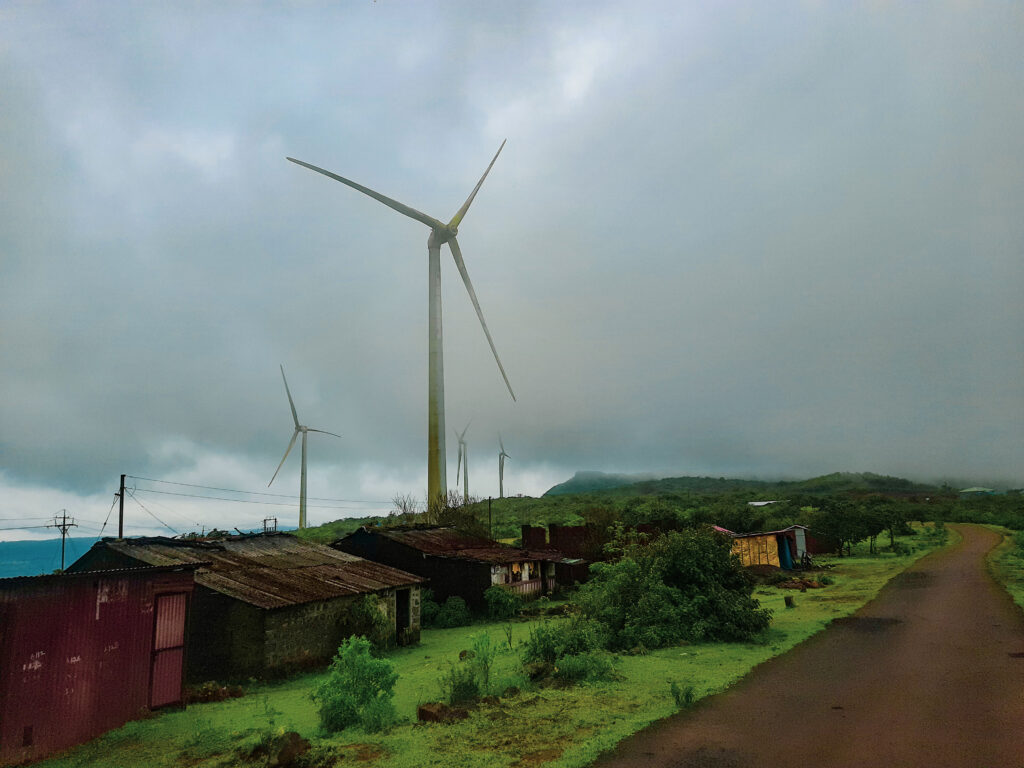
Steffe insisted to stop here and why not, we are roaming the roads to capture these moments, aren’t we?
Kaas is 15 kilometers from here. The small road kept descending and rising. And there came one such ascent of the ghat section which led us to the Kaas plateau.
I slowed down and started scrutinizing the left and right of the plateau to see the colorful blooms. My eyes were yearning to see the pink carpeting effect of Pink Balsam (Impatiens balsamina). But unfortunately these wildflowers were not seen in abundance.
We parked the vehicle, took the entry tickets and started exploring the meadows. There are fences built to protect the delicate carpet of flowers. Entry to the plateau was allowed only at certain places. Rains play a very important part in the blooming of the flowers. The guard keeping a watch on over enthusiastic tourists informed us that due to less rainfall, the flowering on the plateau was affected this year.
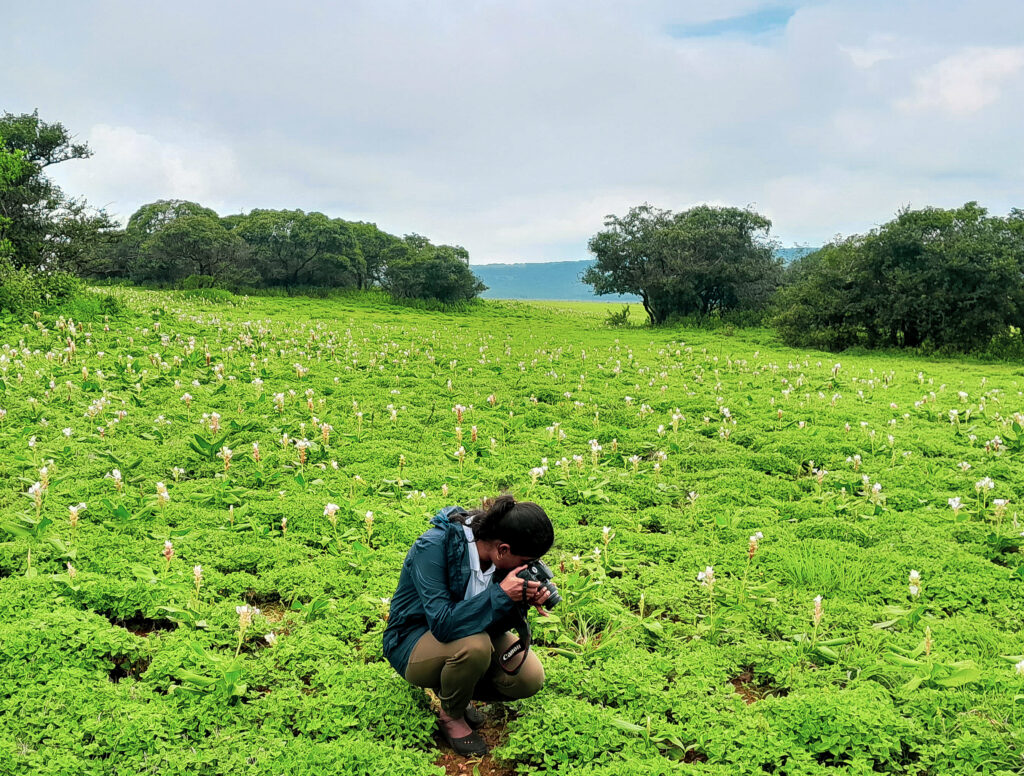
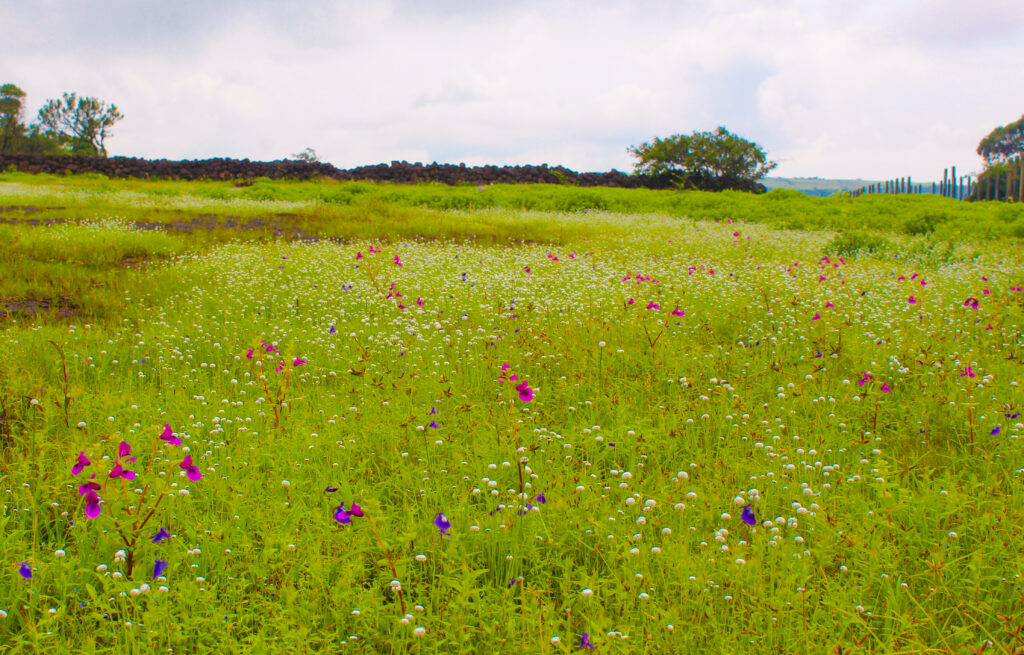
Whatever little the plateau had to offer was striking and beautiful. As far as the eye could see, we witnessed Indian Arrowroot (hitchenia caulina) flowering in abundance. This herb grows upto 50-100 cm. It had yellow & white flowers. Locally, it is known as ‘chavar’.
Other flowers displaying it’s array of colors in plenty were Pipewort (eriocaulon decangulare) – a herb with crowded head of tiny white flowers and Grass Leaved Bladderwort (utricularia purpurascens) – an insectivorous herb with its bluish purple flowers. Interestingly, locally it is called Seeteche Aswe (Tear’s of Sita). It is said that when Ravana abducted Sita to Lanka, her tears fell on these flowers, staining their blue petals with a white dot shaped like a tear.
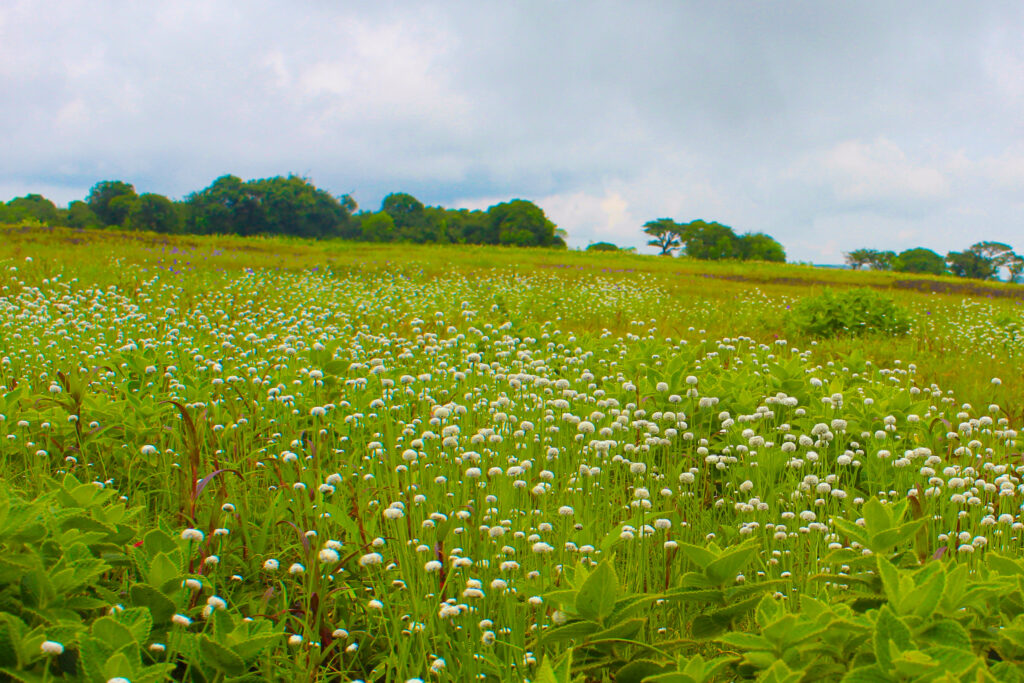
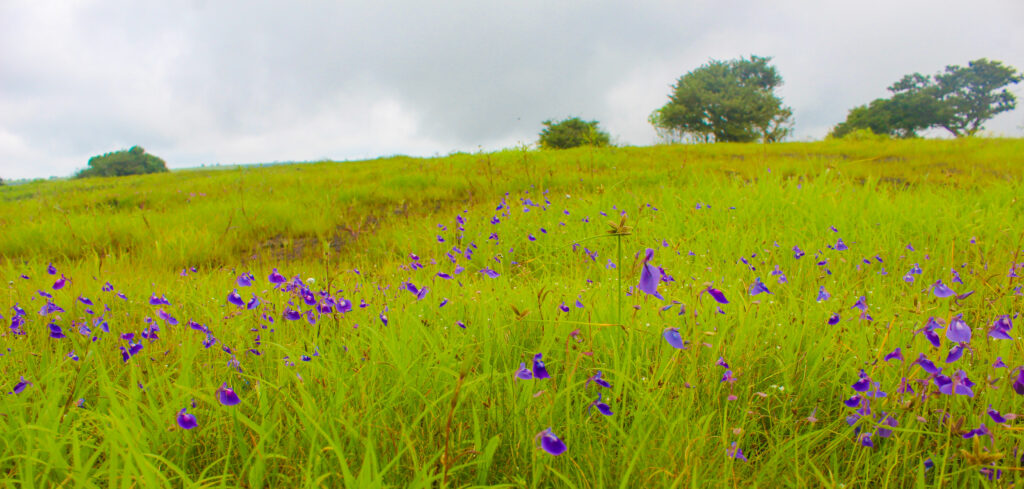
We spent a good time observing and photographing this landscape.The blooming of flowers was not as what we expected but nevertheless we were not disappointed. Nature has its own way of working.The ride to Kaas plateau was one of the most scenic with hillsides bursting with green.
What we explored near Kaas –
VAJRAI WATERFALL
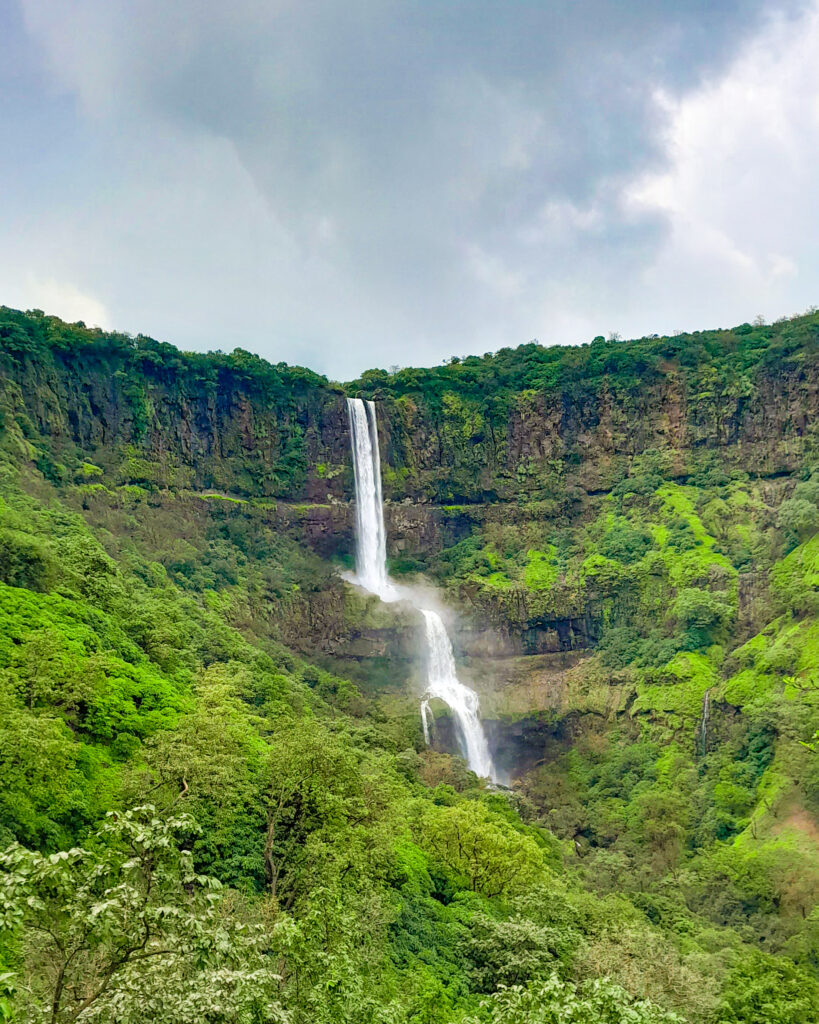
This is around 5 kilometers from Kaas. Bhambavli is the base village. The ride to the village is through a narrow dirt road. There is an entry fee of Rs 30 per person. Vajrai Falls is the highest waterfall in the state, falling down from a height of 560 m. This short hike was so pleasing and refreshing that we felt at tranquility walking among the hills covered with green plantations. There is a fig tree where the laid out steps end which is marked as a viewing point to see the waterfall from a distance. The view from here is very beautiful. We advise not to venture further as the forest is very dense and boulders are risky to walk on during monsoon.
KAAS BAMNOLI TAPOLA ROAD
This is one of the most amazing and scenic rides in Satara district. It added an extra 40 kilometers but the entire stretch of internal village road was worth riding.
Bamnoli is a small village beside Shivsagar lake – a lake formed by the waters of Koyna dam. The village is 15 kilometers from Kaas plateau. The road to Bamnoli was isolated and the forest around was dense with trees covered in moss. Once you cross this forest cover, the view ahead is breathtaking. There were numerous streams and the water was crystal clear. We were speechless for some moments. Apart from boating in the lake, the Vasota fort trek is also organized from Bamnoli.
Tapola is a small village 40 kilometers from Bamnoli. Sun was about to set in an hour. Rain had kept us dry for the day. But clouds had begun to form and looked ready to burst anytime. We had to get out of this internal forest road before dark and reach the main road leading to Mahabaleshwar. We decided not to take many halts and reach Tapola at earliest. Cruising at 30-40 km/hr soaking in the landscape that changed dramatically from village to thick forest cover with very few movements of humans except for herdsmen taking their cattles back home.
MOMENT OF THE DAY –
A moment of epiphany can strike you anytime anywhere. The ride was passing quite pleasantly thanks to all the sites we got to see – forests, birds, clean streams, rivulets, people looking at you out of curiosity. But even amidst all this beauty and friendliness what really captured my attention was this beautiful peacock walking gracefully in the forest just in the vicinity of the road. No sooner had I pointed this out, Steffe jumped from the seat and looked to be walking in the direction of the peacock. The peacock looked seemingly content and did not mind the intrusion of anyone following him and kept moving his feet in a perfect rhythm. I stood where I was content not to disturb the serenity of the moment and watched both of them getting deeper into the forest. I was mesmerized. We captured this moment through our eyes and that was more precious than a digital photograph.
The sun had set but it held its light for enough time for us to reach the main road connecting to Mahabaleshwar. Our next 25 kilometers of ride was in the dark through the ghat. The mist rolled in as I rode down the meandering roads. The weather turned foggy and visibility became very poor. I slowed down the speed for better control in case of sudden braking.
Overall, we enjoyed every moment of today’s ride. It is a delight for every traveler to experience such beautiful roads and places.
DAY 3 – THE HIDDEN SIDE OF PANCHGANI
With no specific plan for today’s ride we left hoping to find some offbeat place in Panchgani just 18 kilometers from Mahabaleshwar. It was going to be a short ride today and more of an exploration.
There are several look out points in Panchgani like Sydney point, Parsi point etc. but we avoid the touristy places and look for something interesting to explore. Few meters ahead of Parsi Point I came across a board which read ‘Swach Bharat Point’. Out of curiosity, we decided to check out.
SWACH BHARAT POINT
This is a beautiful garden made by Panchgani Municipal Council of their garbage depot. There is a biogas electricity plant turning waste into sustainable energy. The gardener was busy pulling the weeds and was surprised to see us as this point is not visited by many. He showed keen interest in answering our questions and threw some light about the waste management system. It was a nice short conversation with him.
Below I share a link to an inspiring article describing how Panchgani won the Cleanest Town in Western India Award and how Kachra Point became Swachh Bharat Point.
https://www.thekodaichronicle.com/environment/panchgani-how-kachra-point-became-swachh-bharat-point/
For a tourist, Swachh Bharat Point also provides a charming view of Krishna Valley, Dhom Dam, Kamalgad Fort and the city of Wai.
RAJPURI CAVES
A signboard In Panchgani market indicated various places to go and impulsively we selected Rajpuri Caves at around 7 kilometers. It started raining heavily as we entered the village road. We always search for a place which is far from the bustling crowd and if that place is a village it makes us more than happy.
A narrow ghat road with hairpin bends took us to the Rajpuri village. A quaint and sleepy hamlet nestled beside a forest with a very few houses looked like a perfect abode of tranquility.
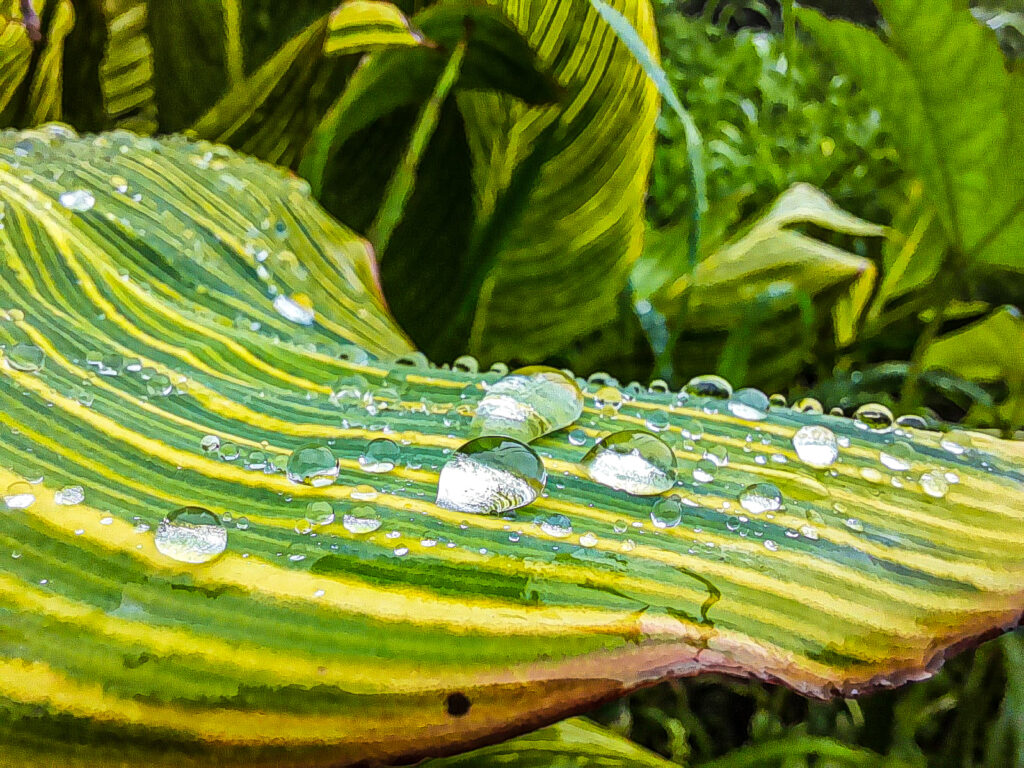
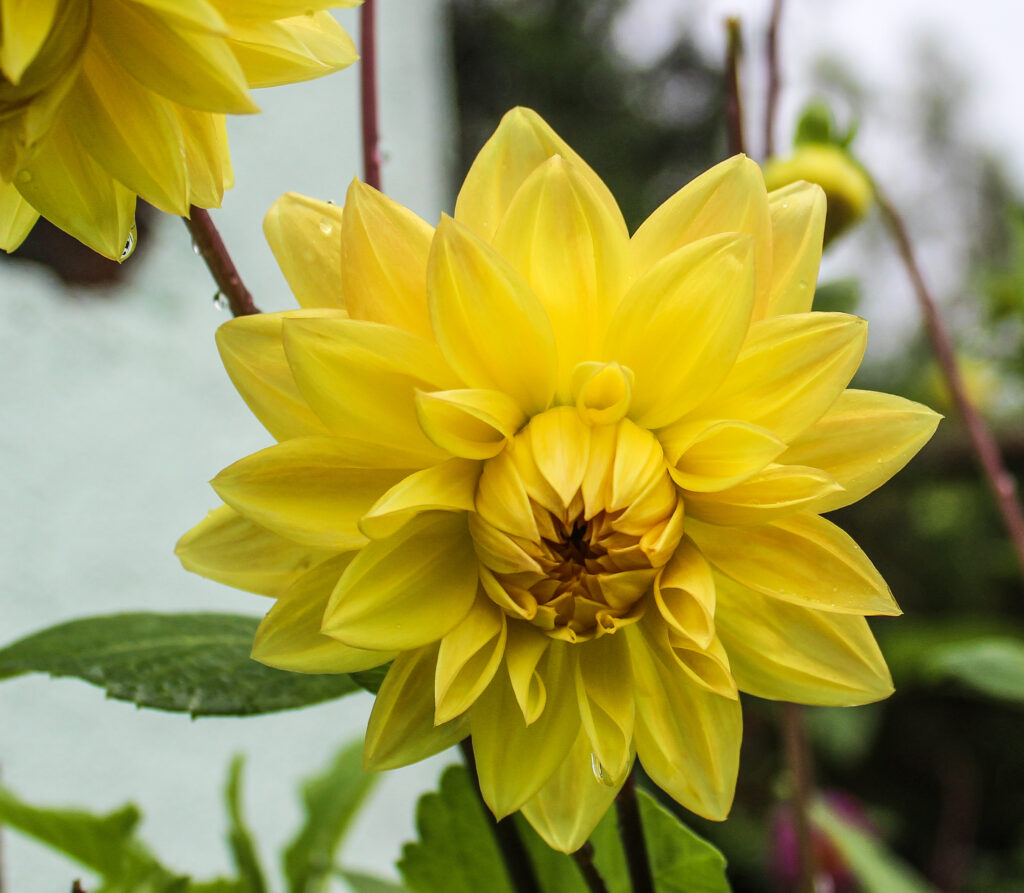
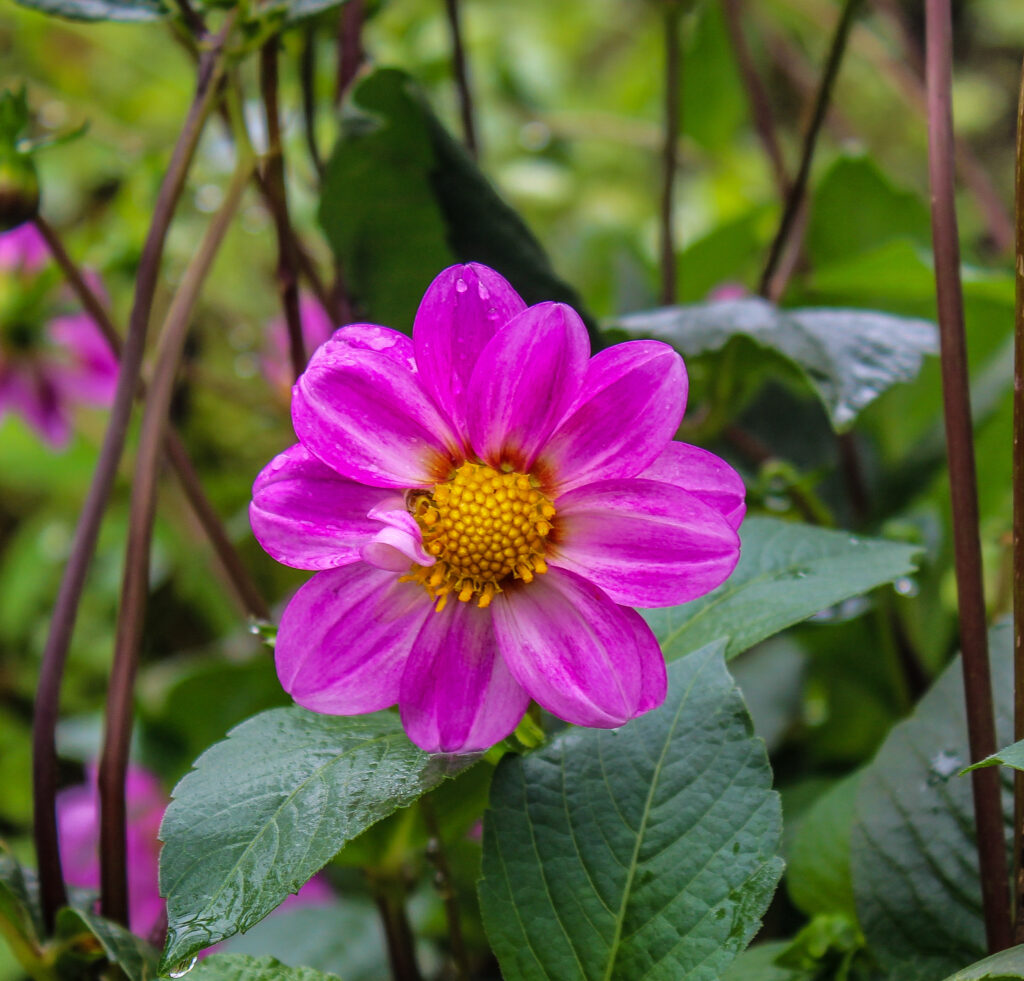
Near the gram panchayat office, there are steps which go below to the caves through an archway. The caves has 3 water ponds named as below
- Shri Dutt Kund
- Shri Mallikarjun Kund
- Shri Vishnu Kund
It is believed that by taking bath in these holy kunds can cure them from all diseases and wash away all sins. Most famous attraction of the caves is the temple of Lord Kartikeya.
I liked the location of the caves. It is a very silent place amidst the forest. The Malabar whistling thrush sang its melody from the ravines below. After spending some peaceful time and photographing tiny wild flowers bordering the steps we decided to explore the village.
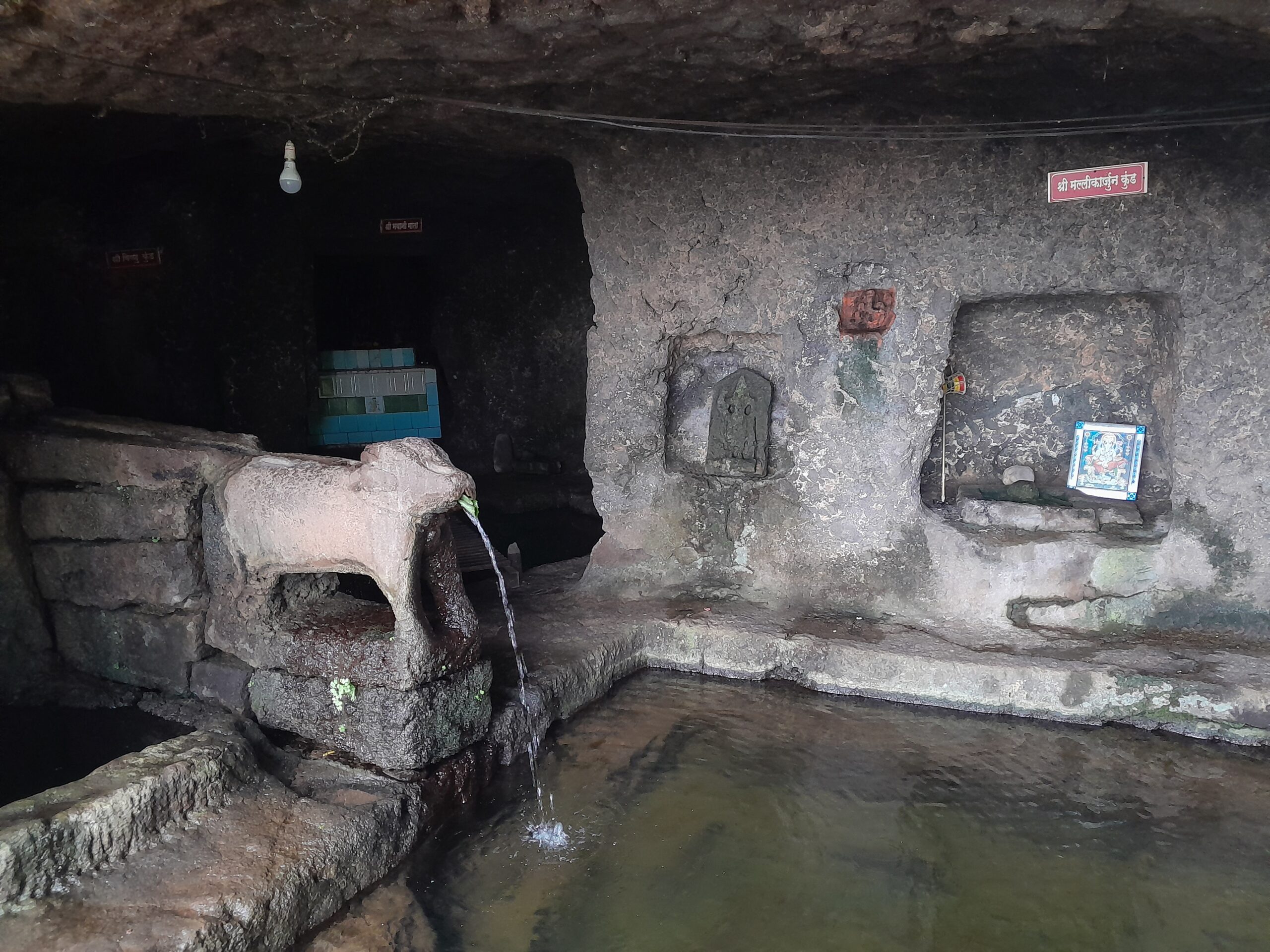
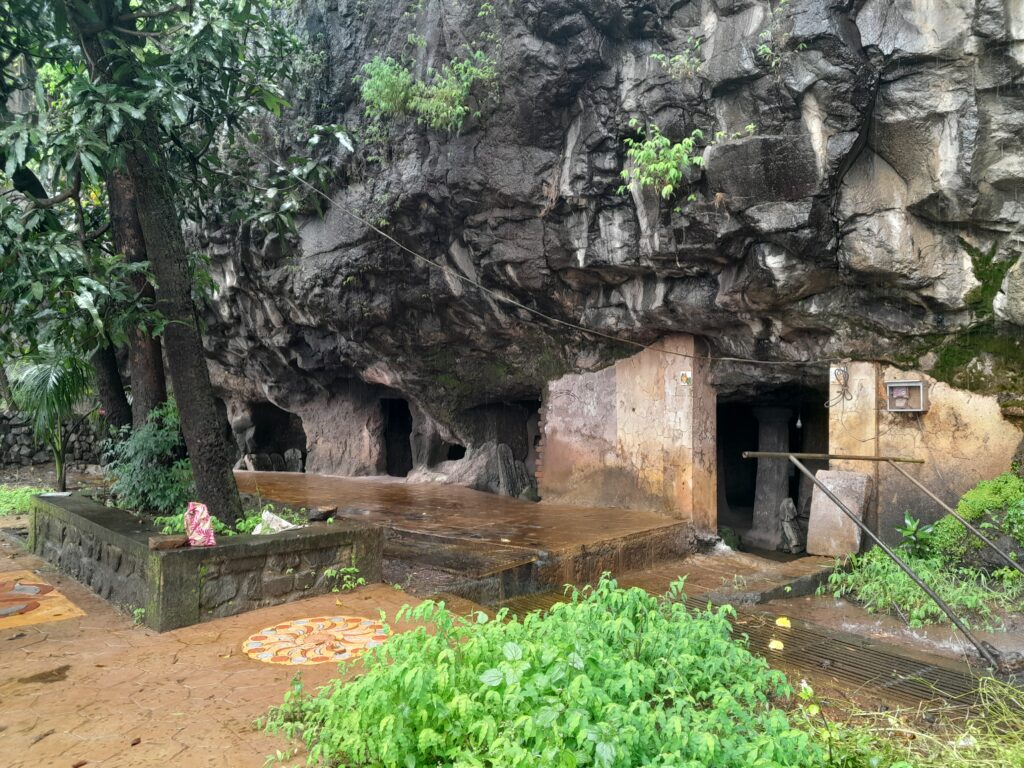
A peahen walking on the roof of the gram panchayat office caught my attention. And this time I wanted to capture the moment on camera. The villagers peeped through their windows as I kept changing angles for better shots (without disturbing the bird).
The real beauty of Rajpuri village lies in its simplicity. Simple houses painted in different shades of color dot the landscape and the surrounding forest gave a breath of fresh air.
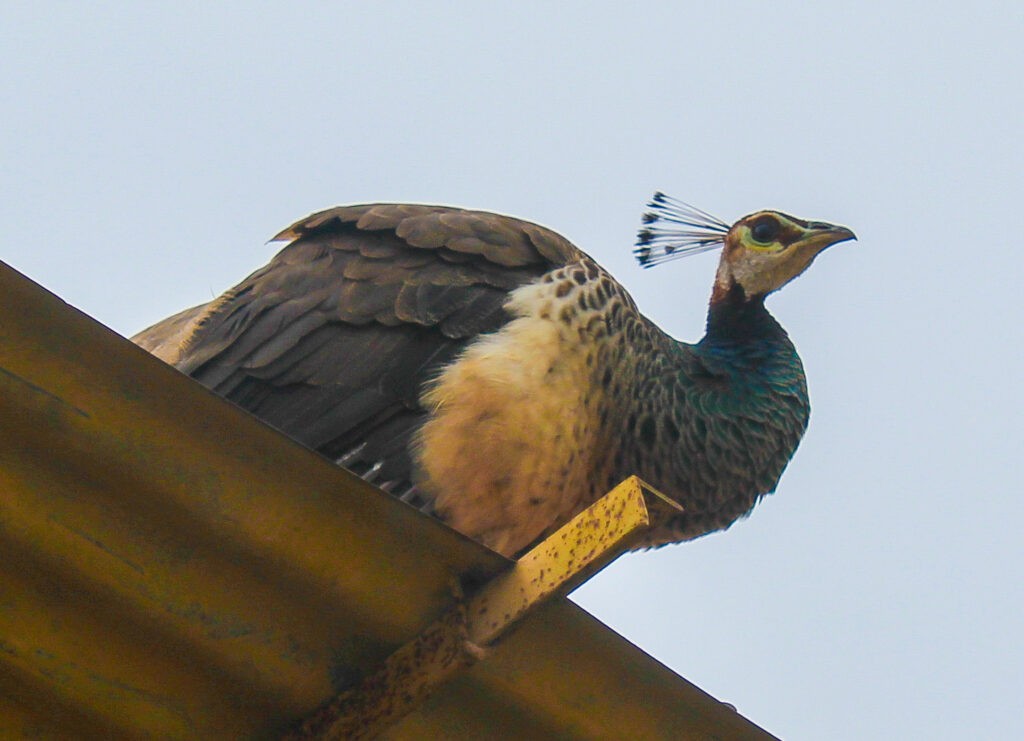
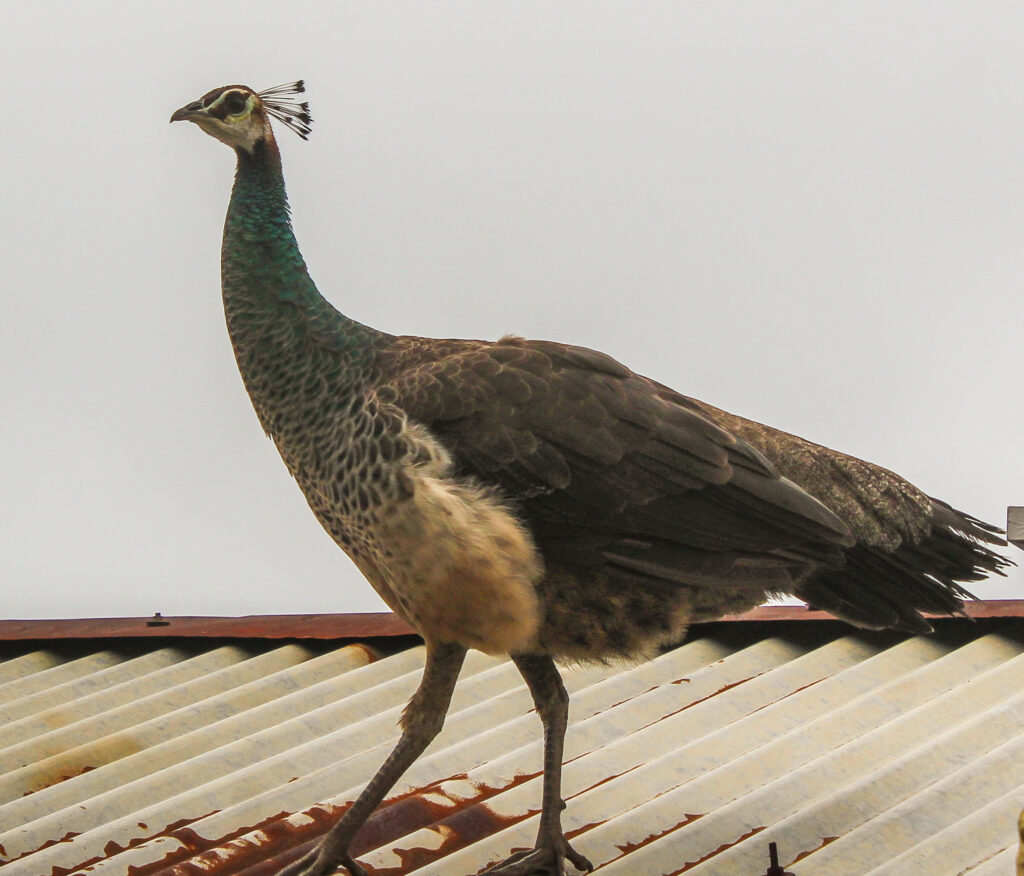
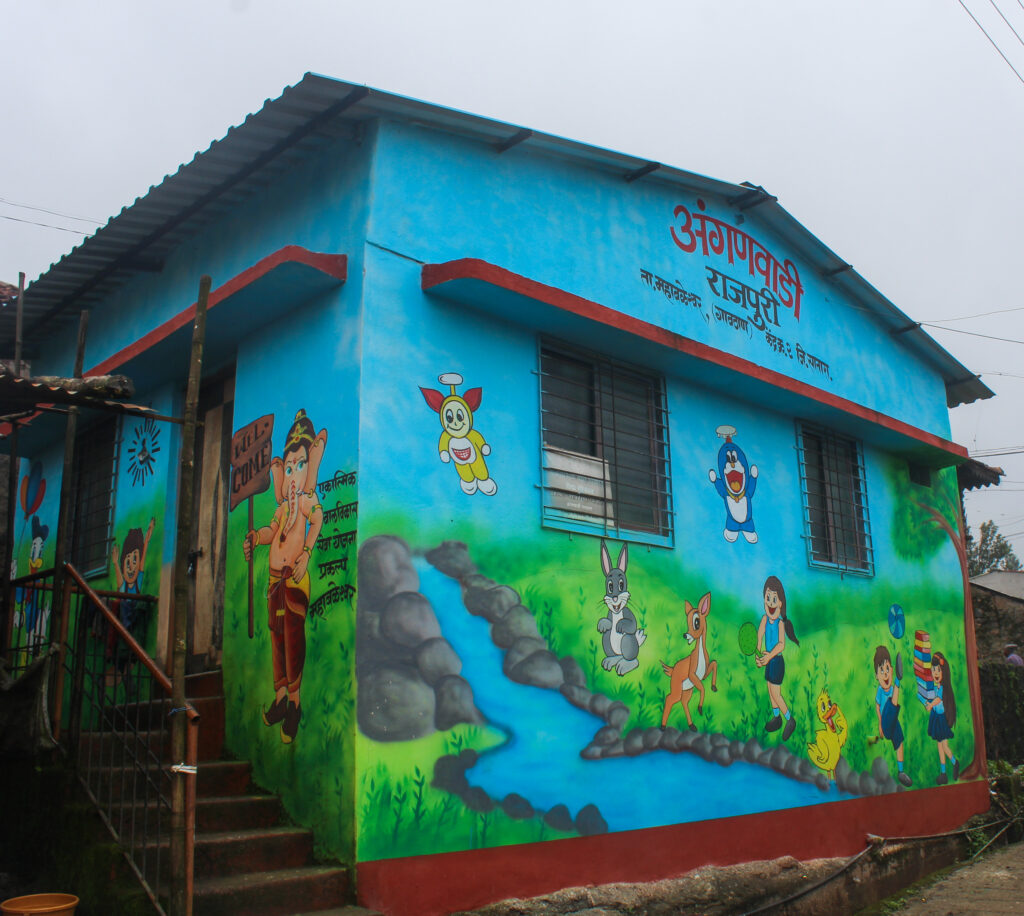
TABLE LAND
This is a tourist point. Tableland is the highest point in Panchgani situated above 4500 feet and also renowned for being the second largest plateau in Asia. The flatland is a good attraction for families during peak season as there are many activities held here which are closed in monsoon. It offers beautiful and endless views of fir trees standing tall above sweeping valleys.
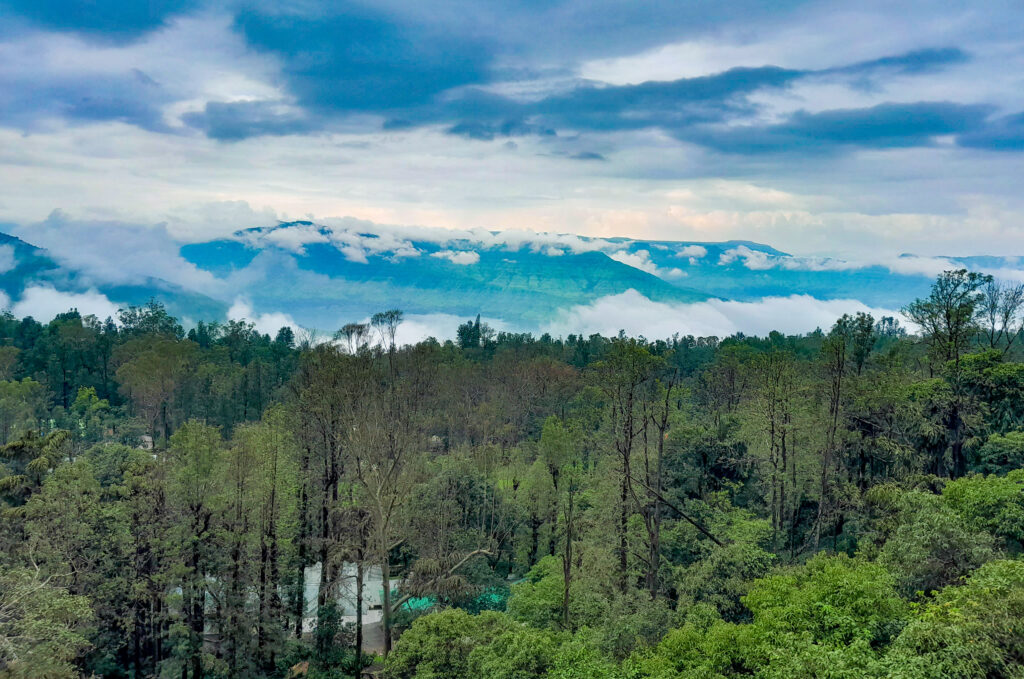
We visited two natural caves called Lion & Tiger caves located near the backside of the tableland. Entry ticket is Rs 10 per head for each cave. There is a statue of Lord Shiva and five Pandavas and their wife. Inside the natural caves sitting on the wooden carved seats you can gorge on the variety of snacks and beverages served by Den Dine Cafe and enjoy the views from here.
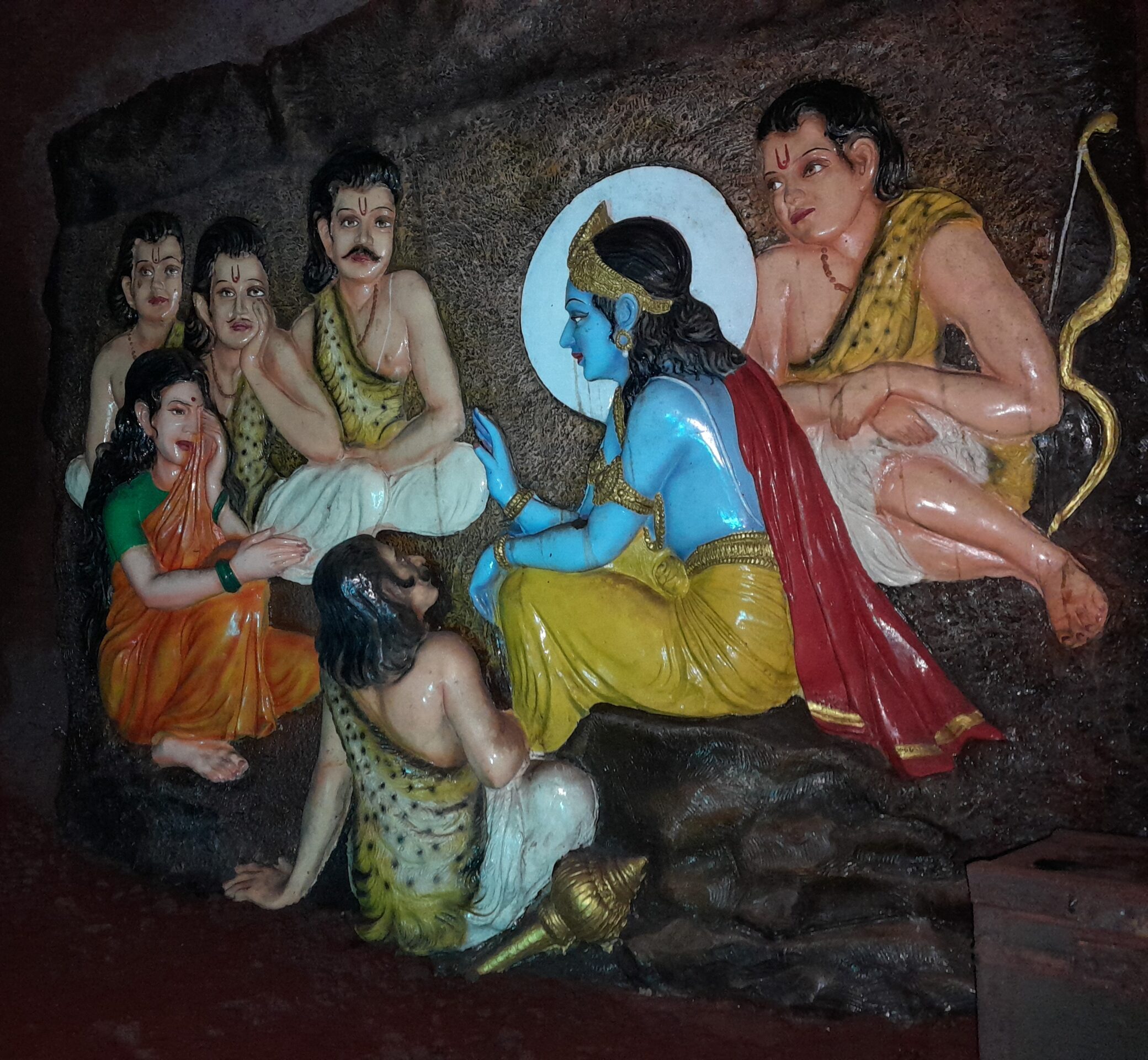
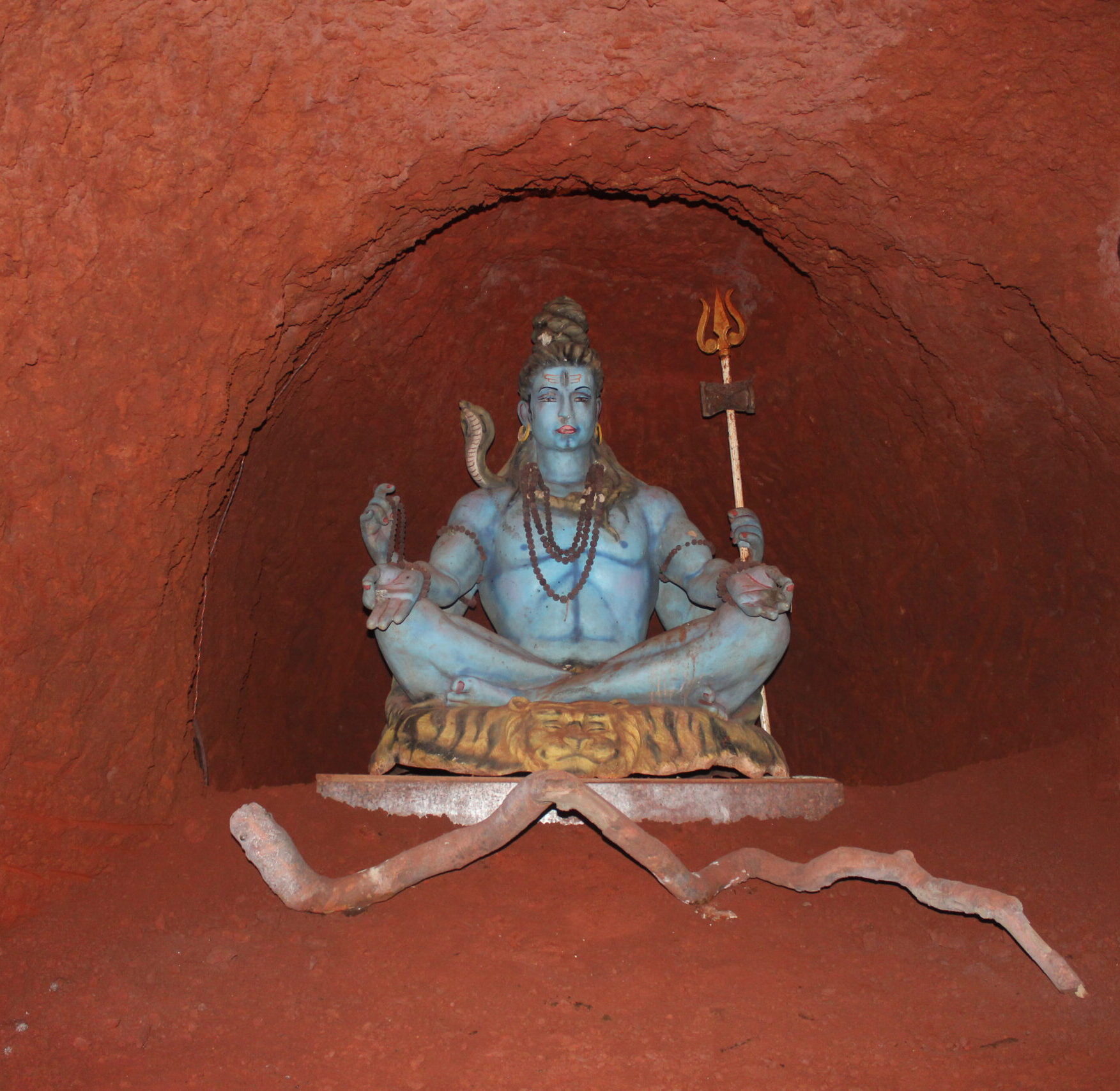
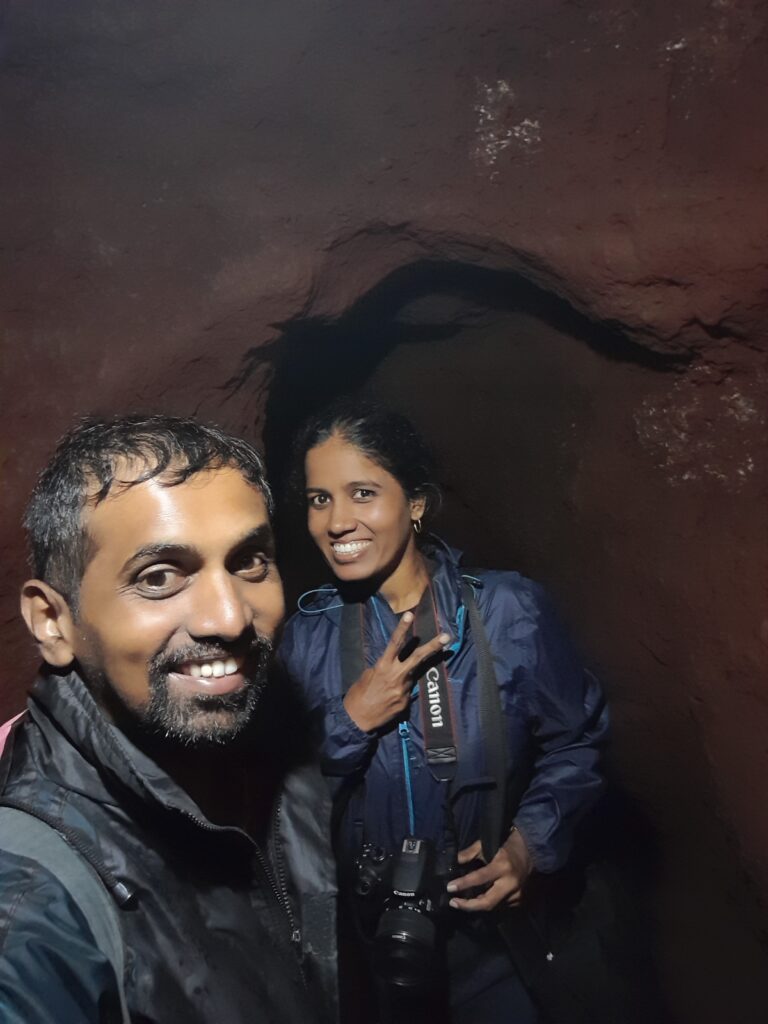

BHILAR – THE VILLAGE OF BOOKS
We were heading towards the famous Mapro Garden when I read a board indicating a village called Bhilar. What captivated me was its caption – ‘Pustakancha Gaav’. Without a thought I told Steffe I want to go here. Being a book lover, how could I not visit India’s first village of books?
Designated households, schools, temples, hotels and homestays maintain a library for the tourists to enjoy reading. The idea is to promote Bhilar as a reading and cultural hub and make tourists familiar with Marathi literature. A diversity in collection has been added with English and Hindi books making it to the shelves.
Every road in Bhilar leads to different categories of the books. There is a board outside the homes mentioning the genre they host like poetry, history etc. and an interested reader can simply walk in and explore the collection. This is really a unique concept.
The village offers something new to tourists apart from the usual sightseeing. Whether you are a book lover or not, you should definitely visit Bhilar.
DAY 4 – A JOURNEY INTO THE PAST ERA
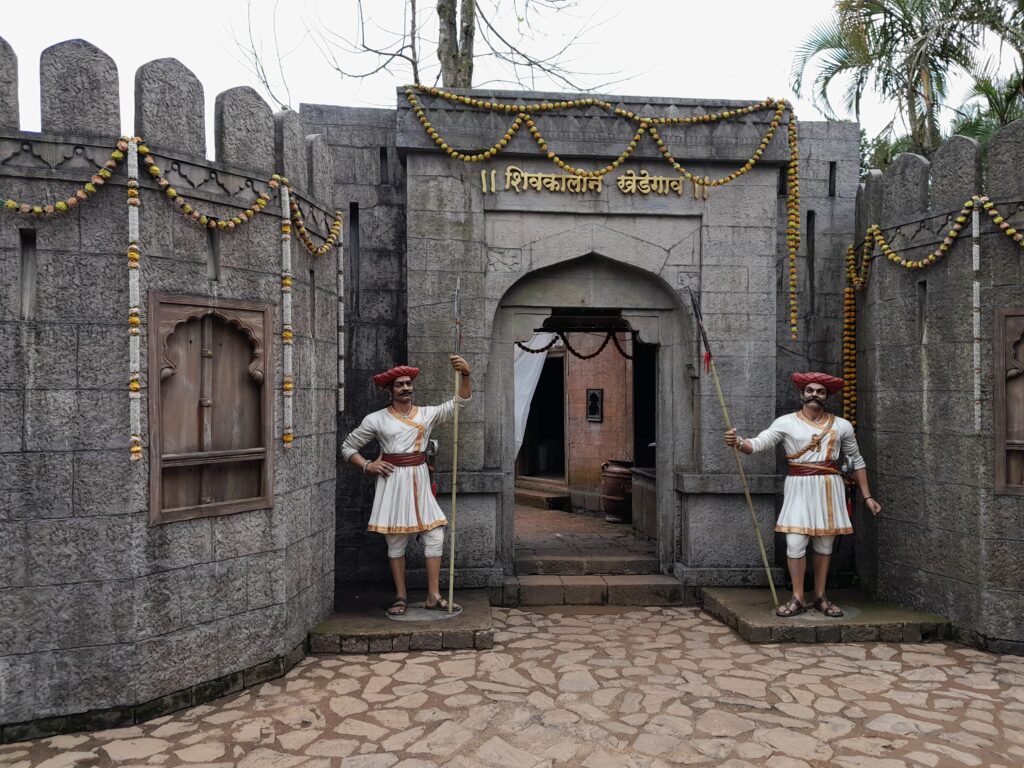
I always loved to visit historical places. It always interested me to learn about the past.
Situated at the base of Pratapgarh Fort is ‘SHIVKALIN KHEDEGAON’
This open air museum highlights traditional village life as it was during Chatrapati Shivaji Maharaja’s reign.
It represents the culture and various aspects of village life, different trades, crafts and family life. Walk among the dioramas (full size statues) of farmers working in the field, cobblers, blacksmith, children playing traditional games, women drawing water from wells, temple of village deity and many more interesting stories that will surely enthrall you of the golden days.
The beauty of the place is in its simple details. For example, the model of the kitchen has an earthen chulha in it and all the utensils inside are made of brass. Also, the houses have cane baskets and women can be seen weaving grains in them. From mud houses to wooden wheels, everything here looks authentic which takes you in the past.

Entry fee is Rs 100 per person including a local guide. Our guide Vikram had profound knowledge and shared every minute information and happily answered our queries. He even helped us in clicking our photographs which he did with perfection. The ambience has a very rural setting and gives a rustic vibe of an era gone by.
We definitely recommend you to visit this traditional village. It is just 16 kilometers from Mahabaleshwar towards Pratapgarh fort.
VARIOUS DISPLAY OF DIORAMAS IN THE TRADITIONAL VILLAGE
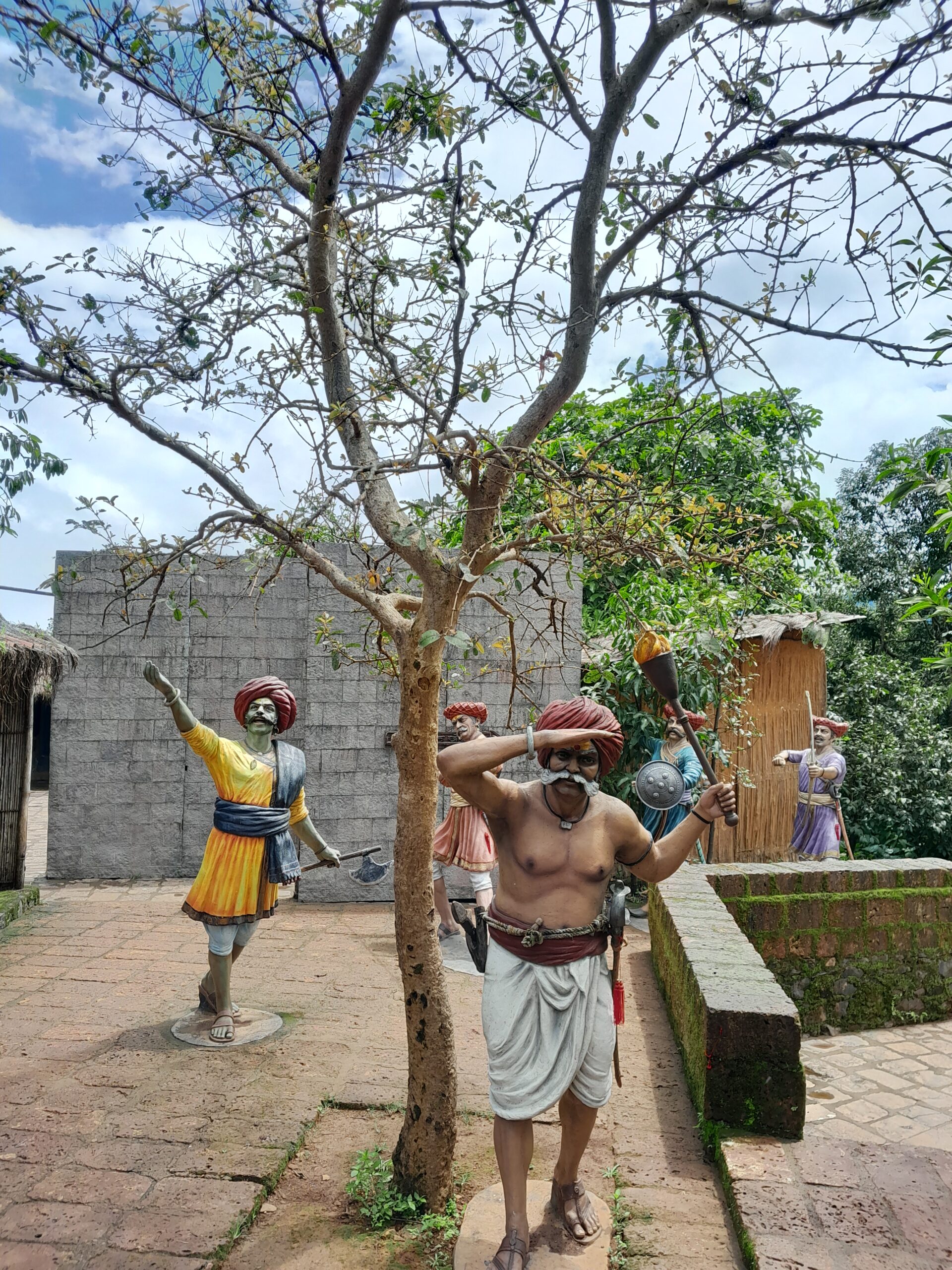
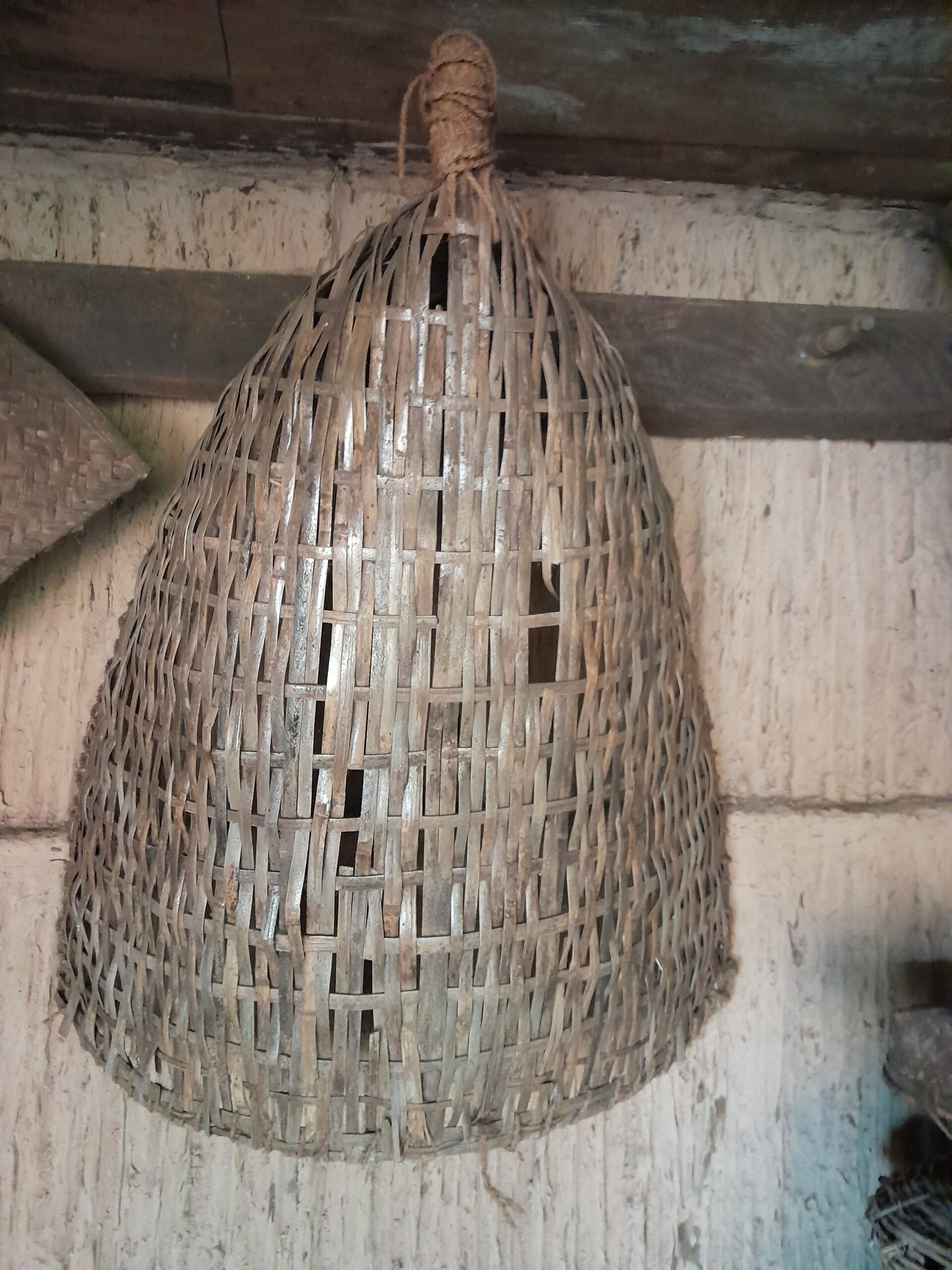
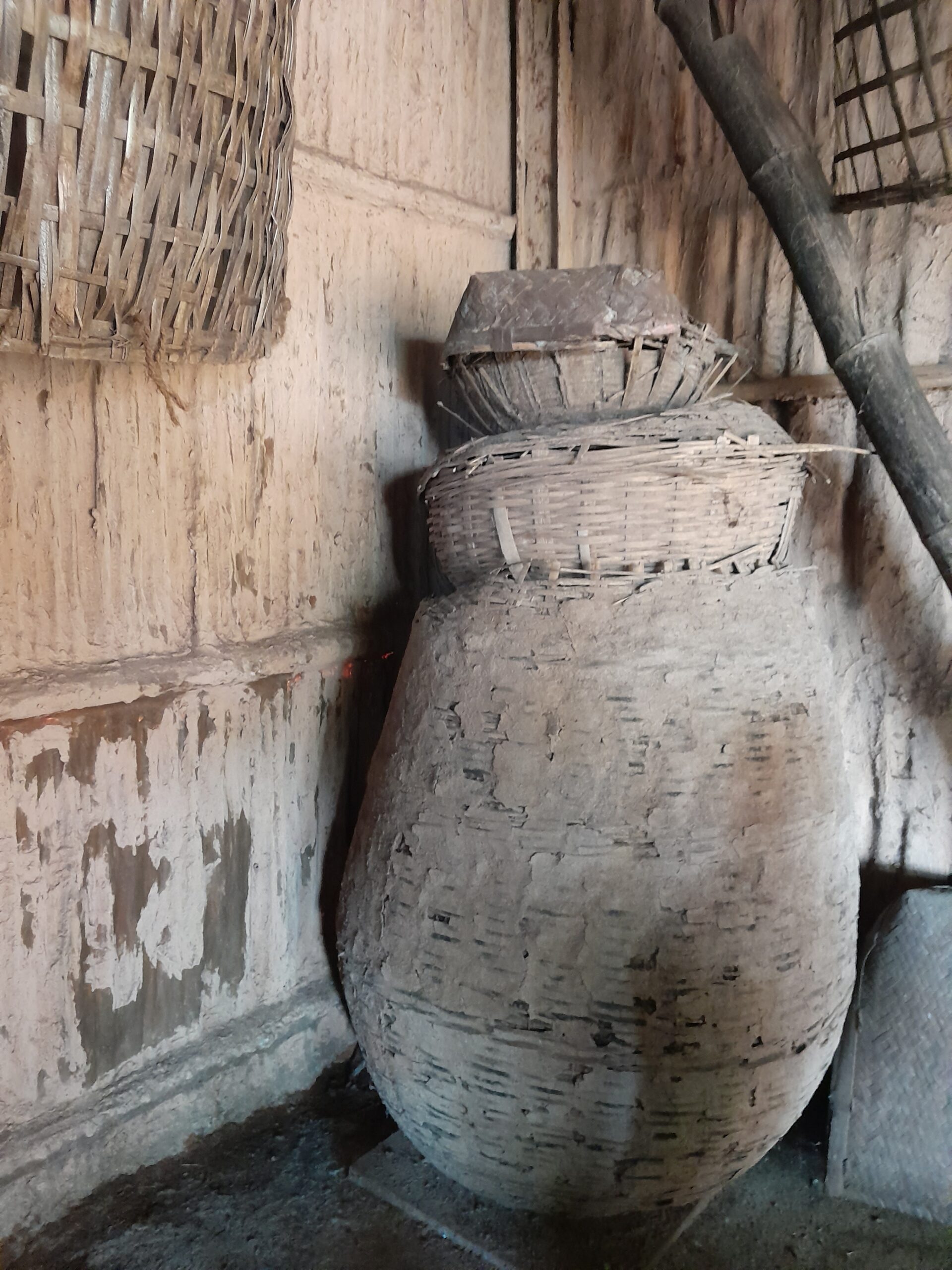
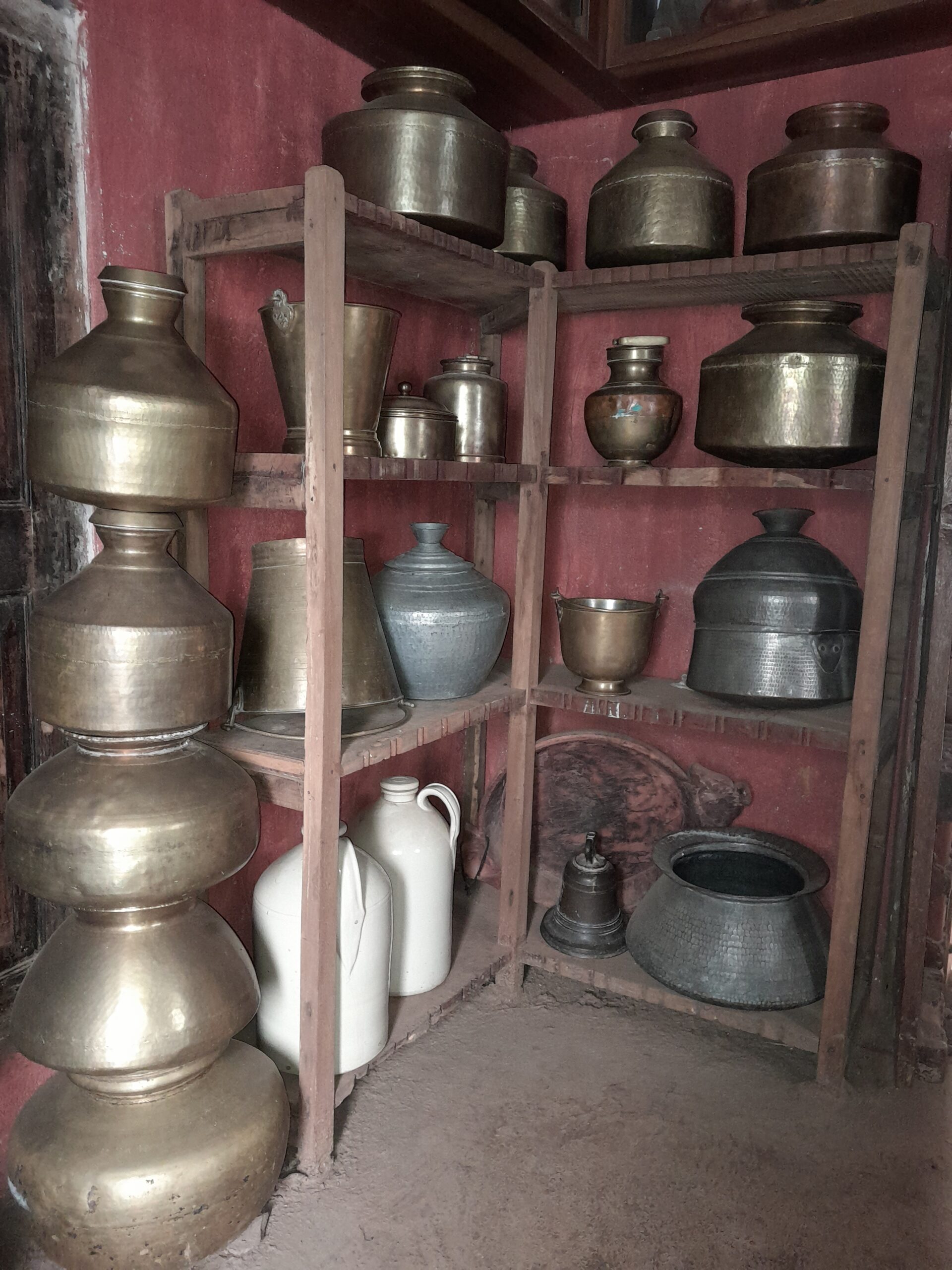
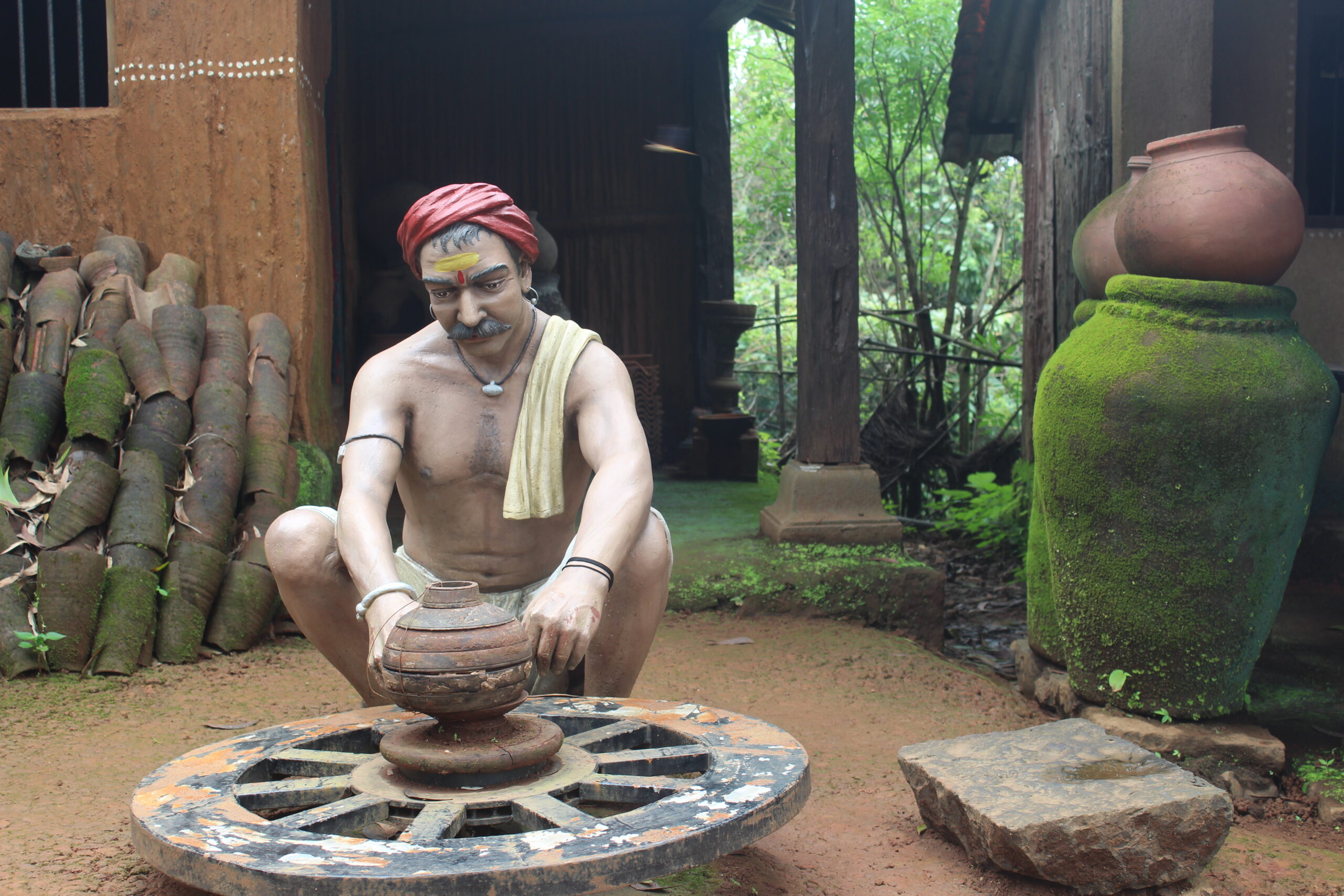
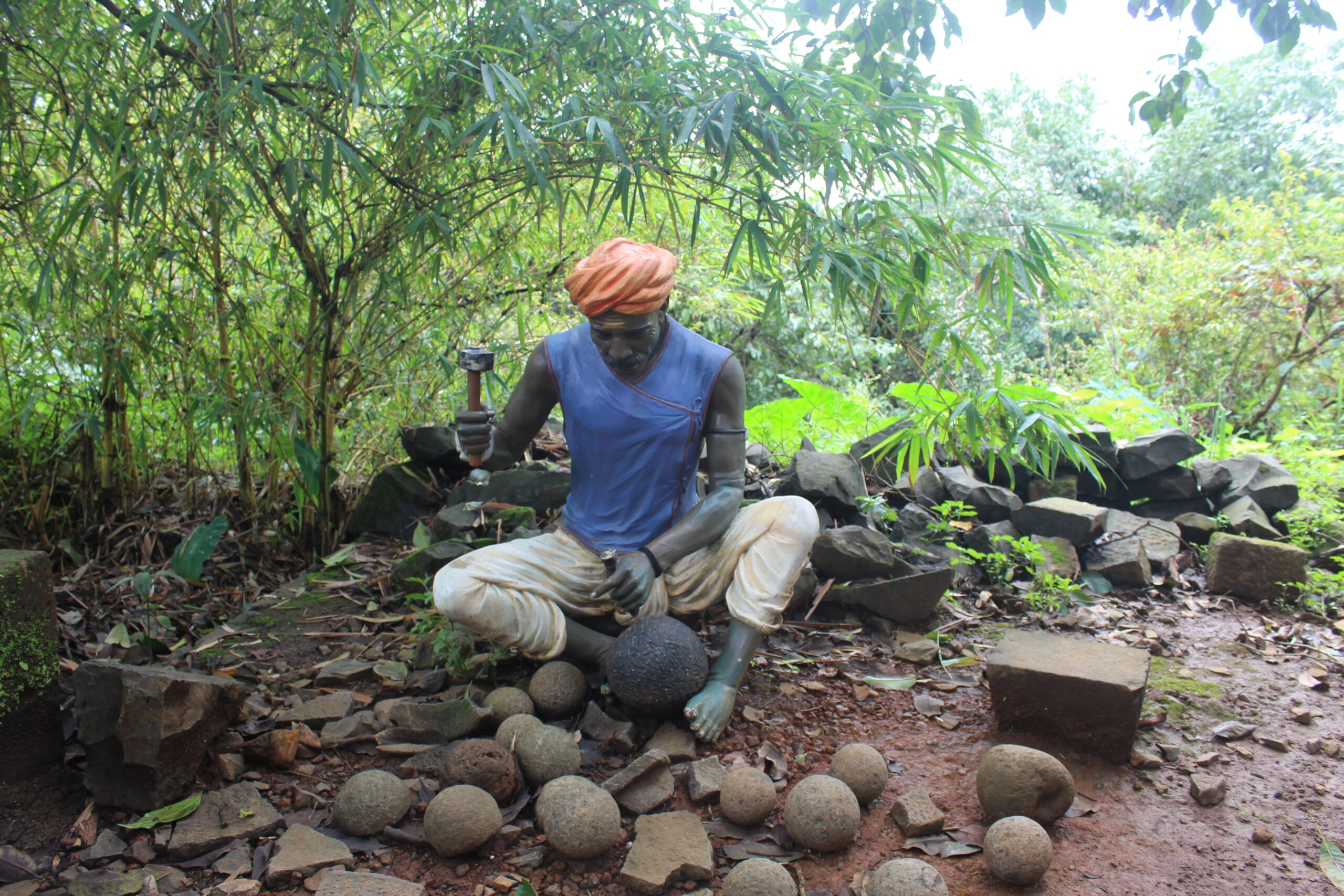
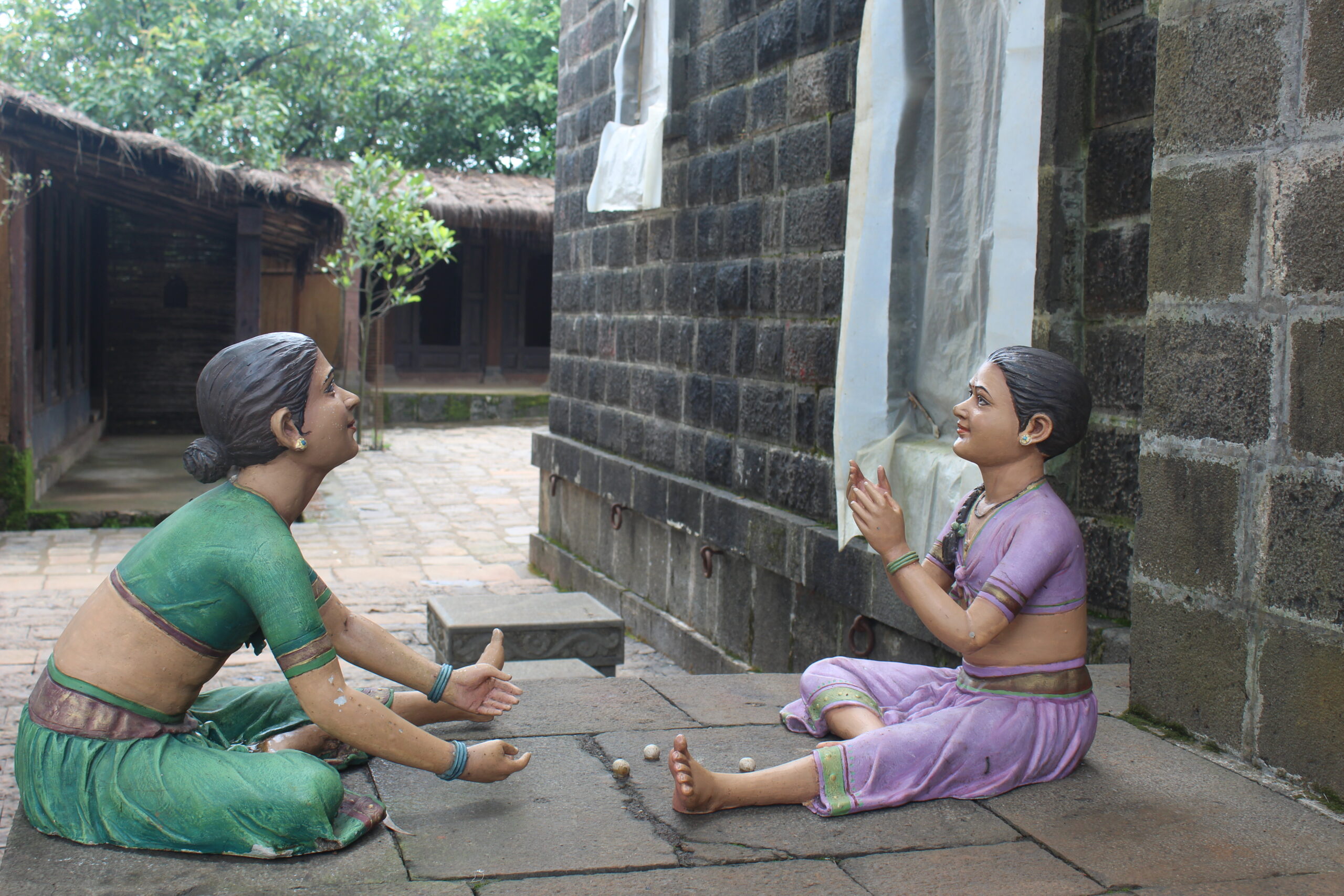
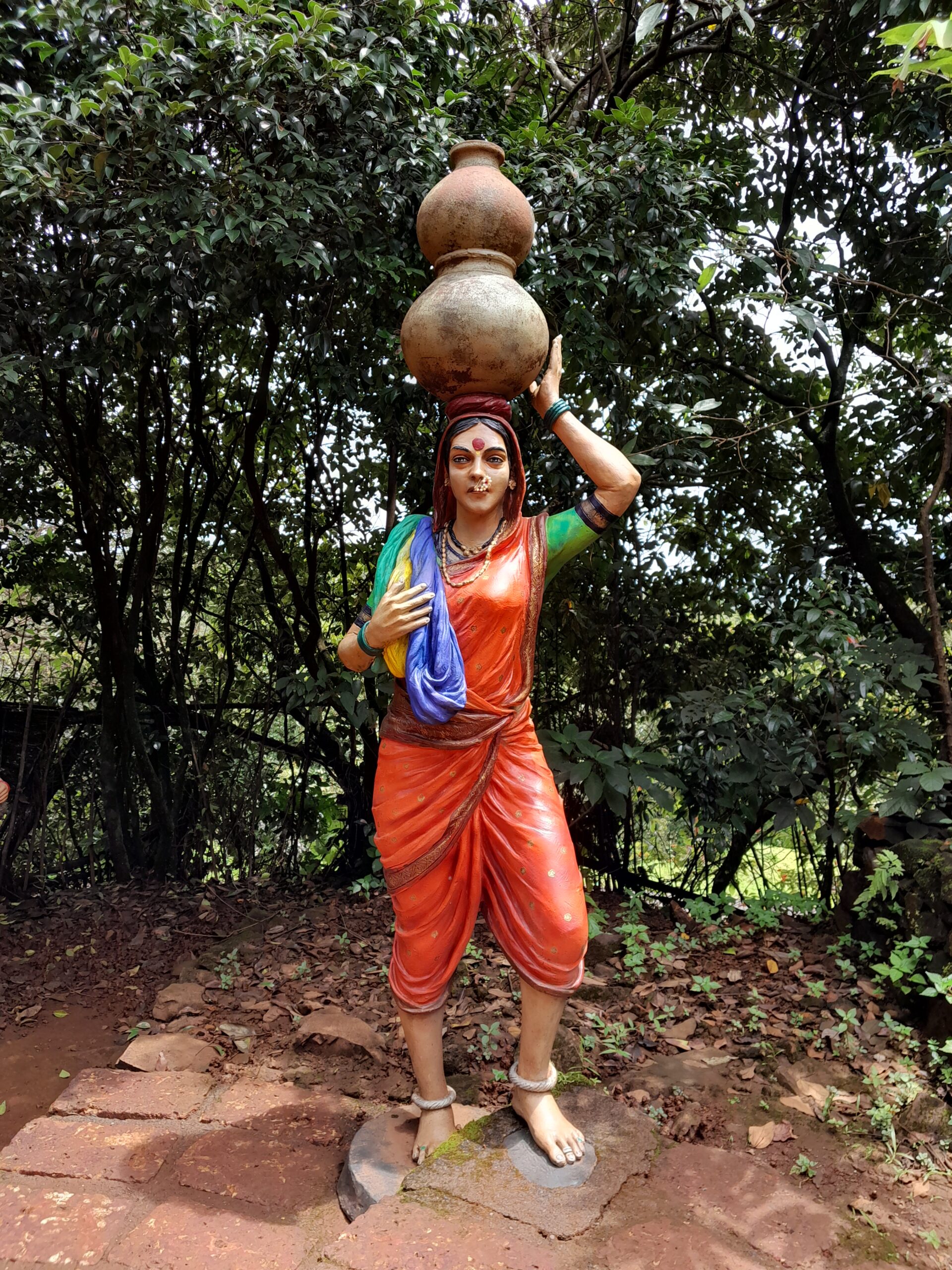
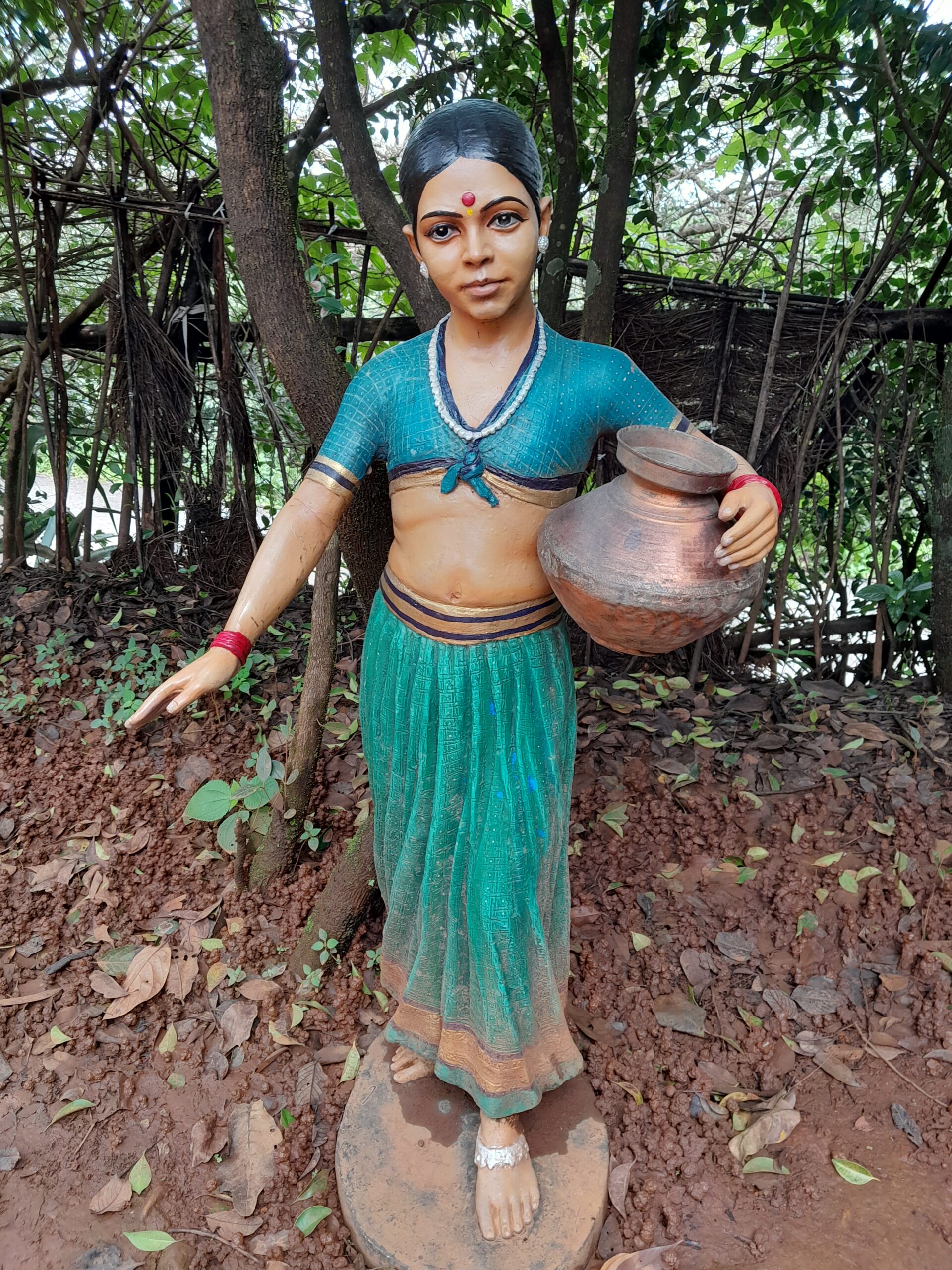
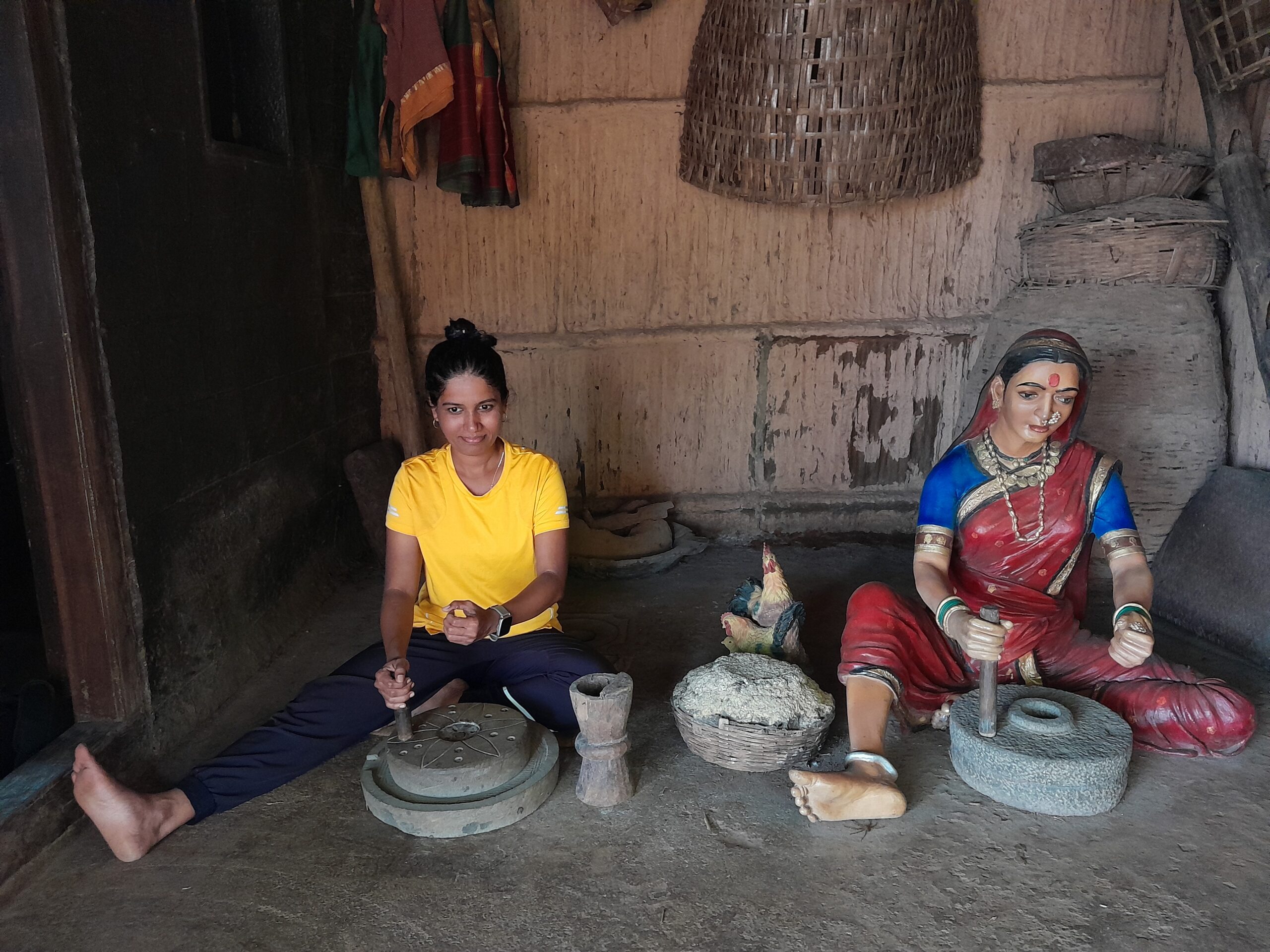
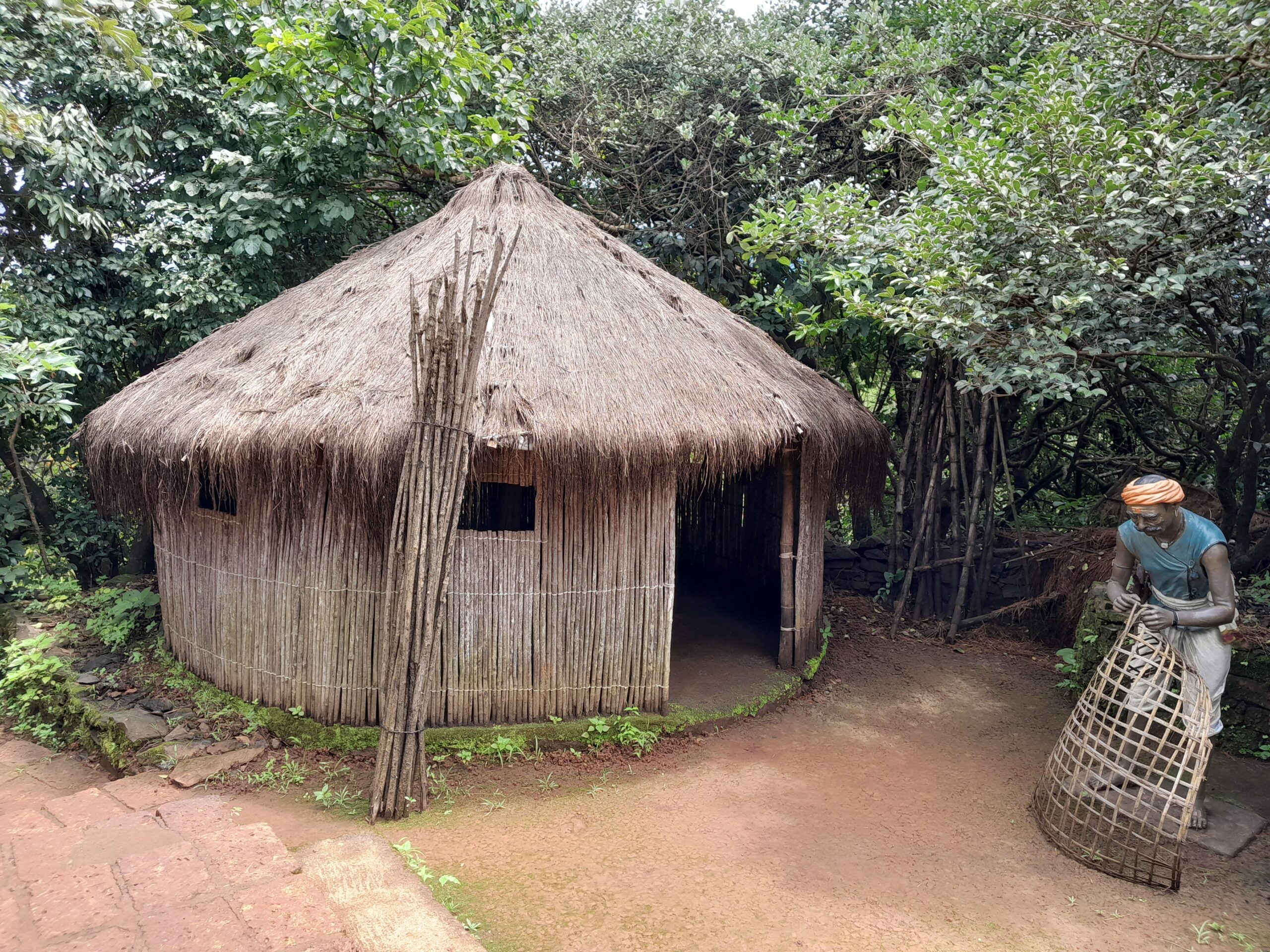
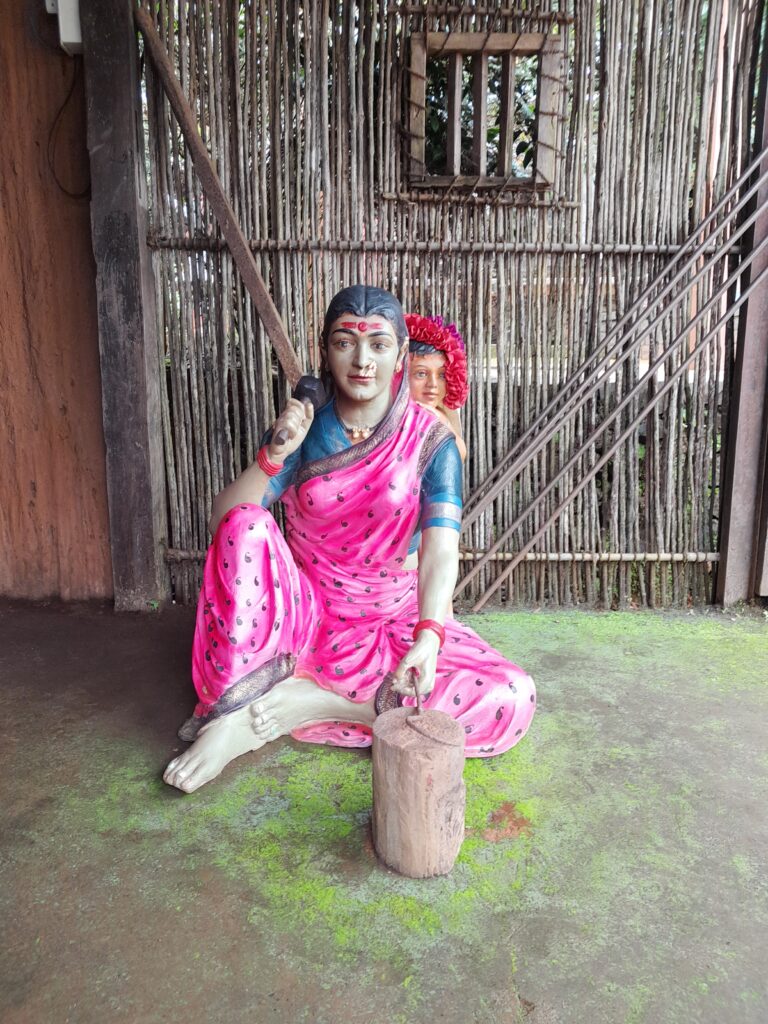
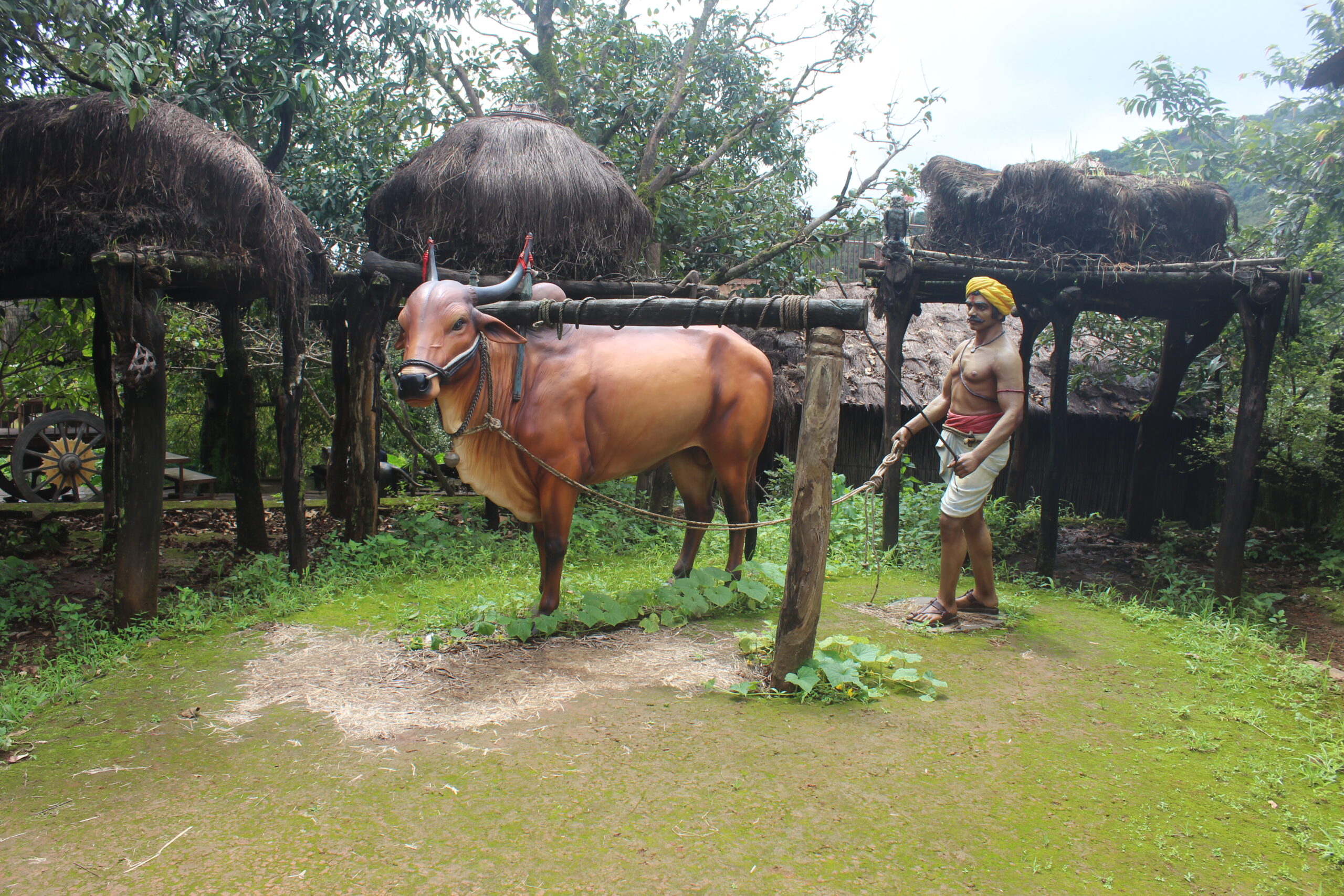
DAY 5 – THE RETURN JOURNEY
With a heavy heart we packed our luggage the day before. A day which every traveler wishes shouldn’t have come. The roads have no end. They keep moving on but we have to return.
Steffe was committed to reaching home early. So, this day we had no plans of exploring. It was simply a long ride through the same route via Ambenali ghat.
The weather was pleasant. Clouds kept rolling into the valleys. Roaring cascades hurried down the slopes. Every few meters, we kept halting just to feel the crisp mountain air and see the enchanting views of deep wooded valleys. An abode of absolute solitude where only birds sang their melody with an occasional honking of a vehicle approaching a blind curve. We wanted to soak in the views to our content before we hit the highway.
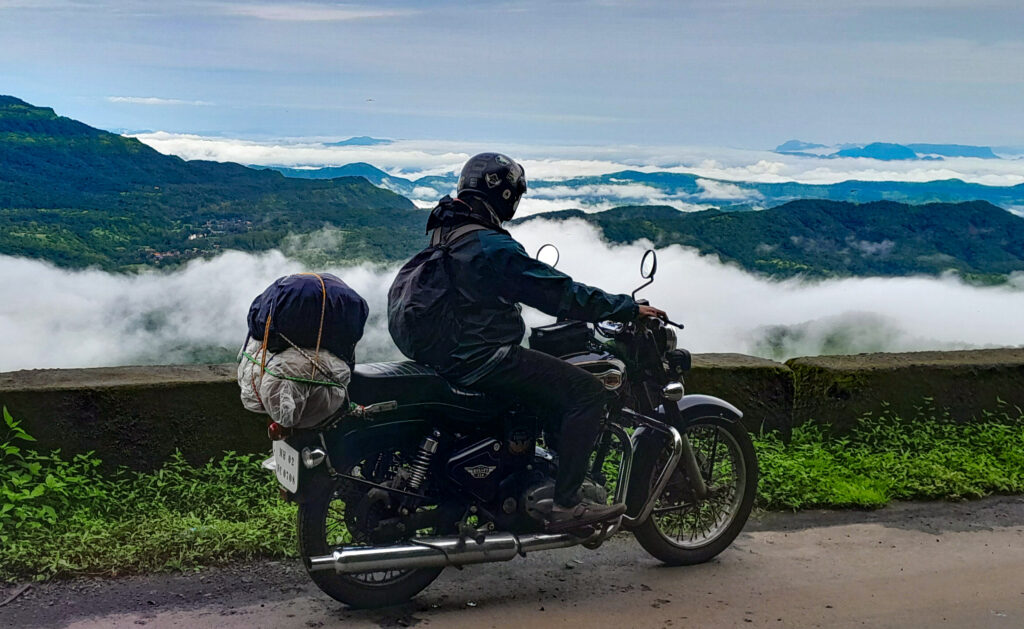
The Sahyadris are full of surprises. Among the many endemic and rare species, it also hosts an unforgettable phenomenon - the mass blooming of the Karvi flowers which bloom every eight years. And we witnessed this magical display on Ambenali ghat. The hills were lined with Karvi trees (Strobilanthes Callosa) which were in full display and turned the landscape violet and purple. This made the whole journey scenic and we couldn't resist stopping frequently to capture a few photographs.
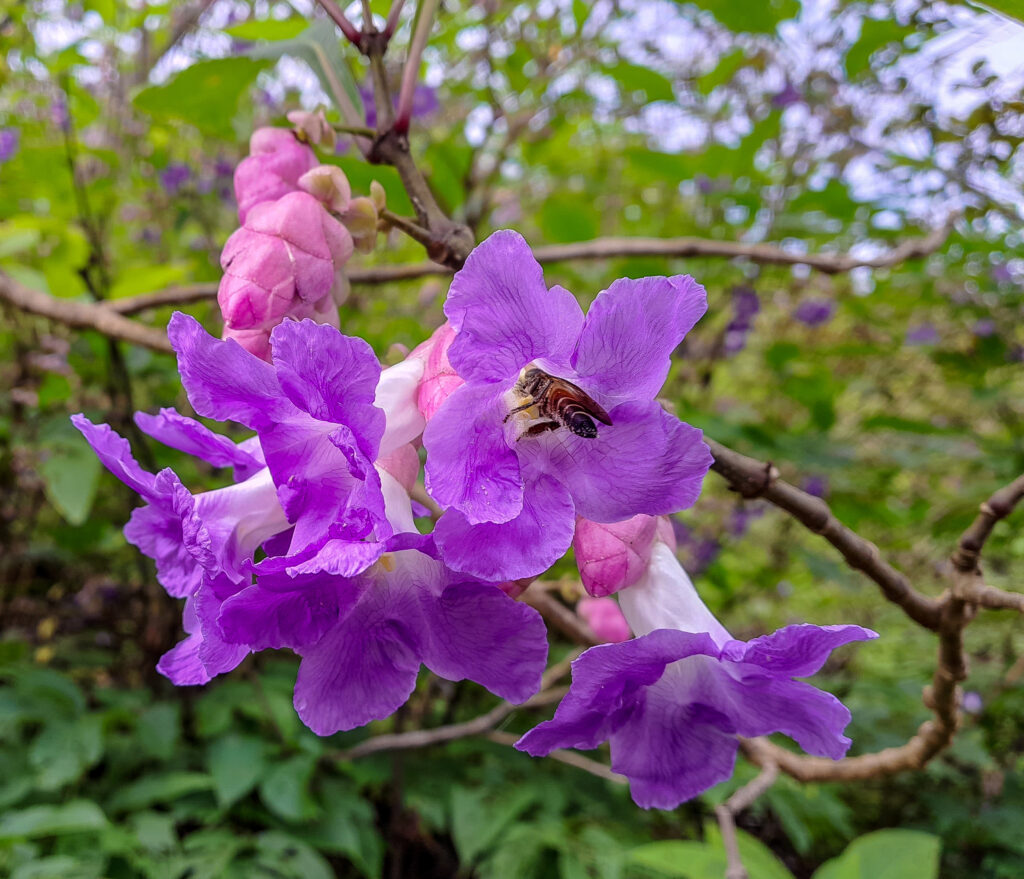
There is a small tea stall run by a retiree at Kapde Khurd village, 10 kilometers before you reach the highway at Poladpur. He has his house built just on the banks of Savitri river. He happily agreed to let us pass through his home to reach the river. This was our last halt on the ghat. A bangle seller who often comes to the village to sell his colorful bangles also stopped for a tea. We spent a good time listening to many stories which the retiree had to share.
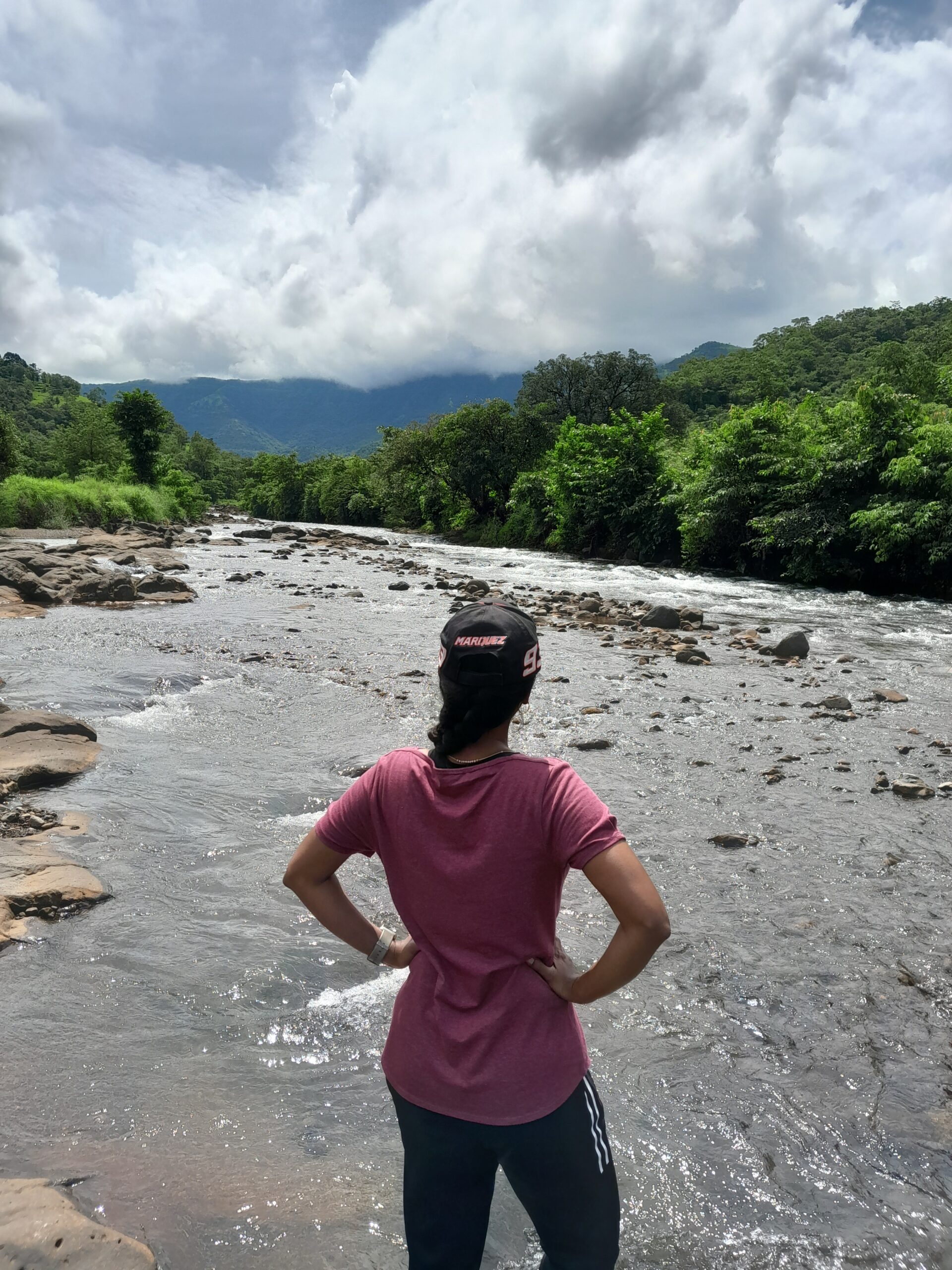
His house had washed away in the floods last year and also suffered huge losses. But to this moment he looked so content and satisfied and happy to serve his customers. For this very reason, I prefer stopping at stand alone stalls over hotels or dhabas. More than money, they want someone whom they can talk to. We are hungry for stories and don’t mind listening to them even if it costs us a tea at mid noon.
Bearing the heat and pain for four hours on the highway, we entered Panvel through JNPT road and it started raining very heavily. Flashlights beamed, roads flooded with vehicles, continuous honking and traffic all over. First time on this road trip, we wished we could reach home soon.
– Clement & Steffe
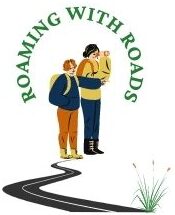
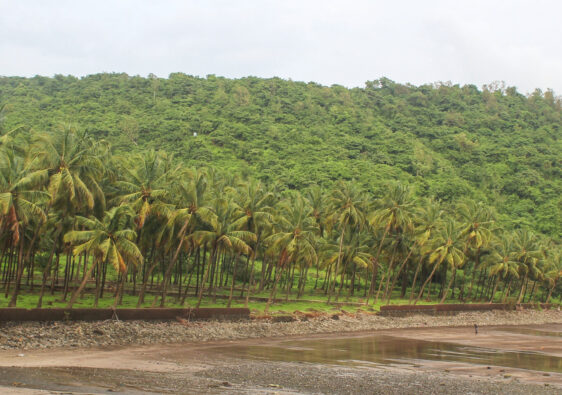
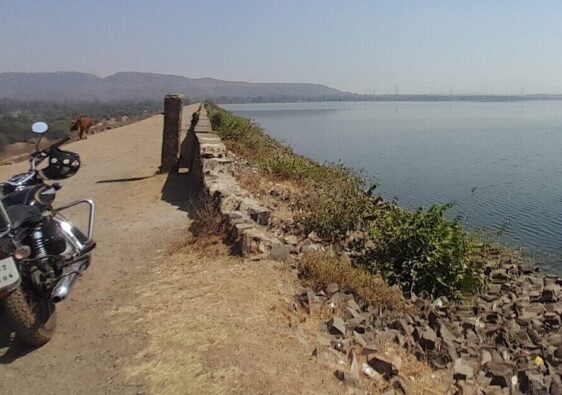
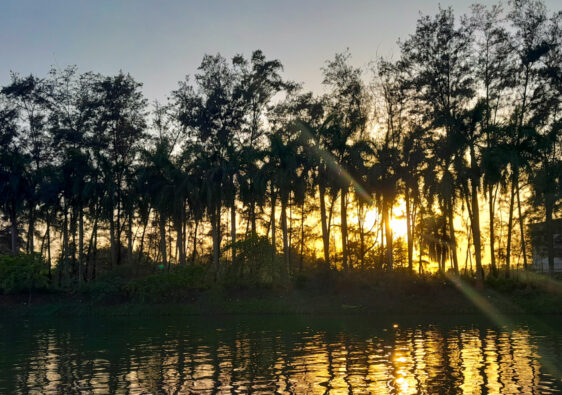
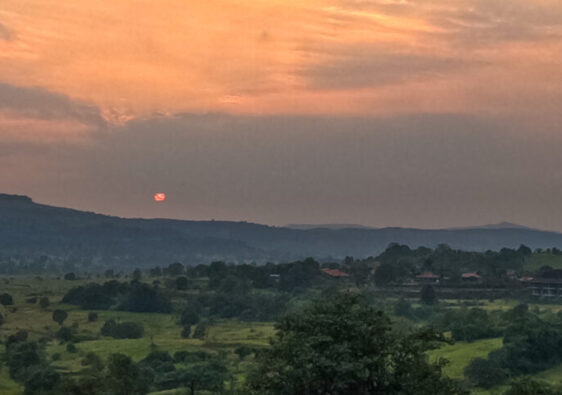
Absolutely awesome writing. Felt like i was on this journey with you guys. Lovely photography.
Beautifully explained each and every moments.
All the best for your future adventures👍🏽
Thank you Neha!!
Keep reading and roam the roads with us
– What a combination .. simple food on highway in monsoon weather – dal khichdi, bhakri, and thecha.. WOW!
– Enroute information of Gandharpale Caves was good-to-read experience, like served extra in plate, out of the menu.
– Description of flowers and herbs at Kaas Plateau was very useful information.
– It’s true, some moments can only be captured through our eyes – this reminds me of a scene from a movie called, The Secret Life of Walter Mitty, where Walter Mitty (Ben Stiller) goes to Afghan Himalaya to meet Sean O’Connelley (Sean Penn), a photojournalist who is waiting there with his camera to capture a rare snow leopard’s photograph. When Walter Mitty meets Sean, following are their conversation when they get to see the snow leopard:
Sean : “There is a snow leopard in this range so we have to try to be very very very very still. They call the snow leopard the Ghost Cat. Never let itself to be seen.”
Walter Mitty : “Ghost Cat ?”
Sean : “Beautiful things don’t ask for attention.”
( Snow leopard appears and Sean makes Walter Mitty see the snow leopard through his camera lens )
Walter Mitty : “When you gonna take it ?”
Sean : “Sometimes I don’t, if I like a moment, I mean me, personally, I don’t like to have the distraction of the camera so I stay in it.”
Link to the scene of the movie : https://www.youtube.com/watch?v=kmB8MZvWASo
I am glad, Clement, you came across such moment where you don’t feel like capturing the moment through camera lens but through your eyes. It must had been a wonderful feel to see a peacock in forest, enjoying monsoon, without any barrier.
– Good to know that you prefer visiting less travelled road places rather following famous tourist spots e.g. Swachh Bharat Point.
– I read about Bhilar village known as ‘Pustkancha Gaav’ and I am glad to know that you visited this unique village.
Thank you for your recommendation of Mast Malvani and Shivkalin Khedegaon, will surely visit these places when will travel towards !
I have not come across any article or blog which describes Mahabaleshwar and Panchgani so simple and unique way.
Pleasing photographs and very well written and informative, Clement.
Thank you for sharing your travel experience with us through this blog !
Keep Exploring ! Keep Writing !